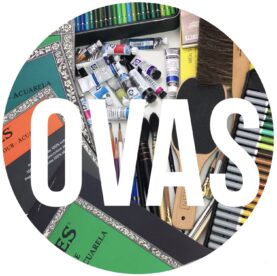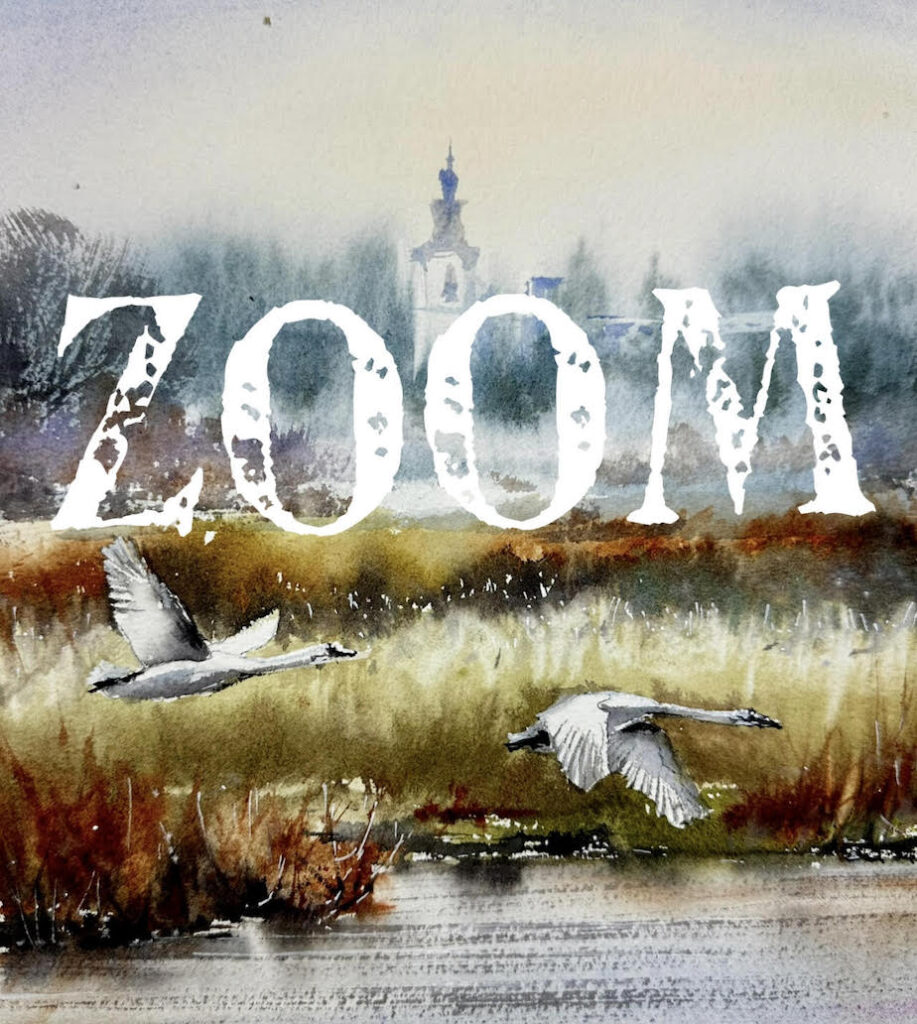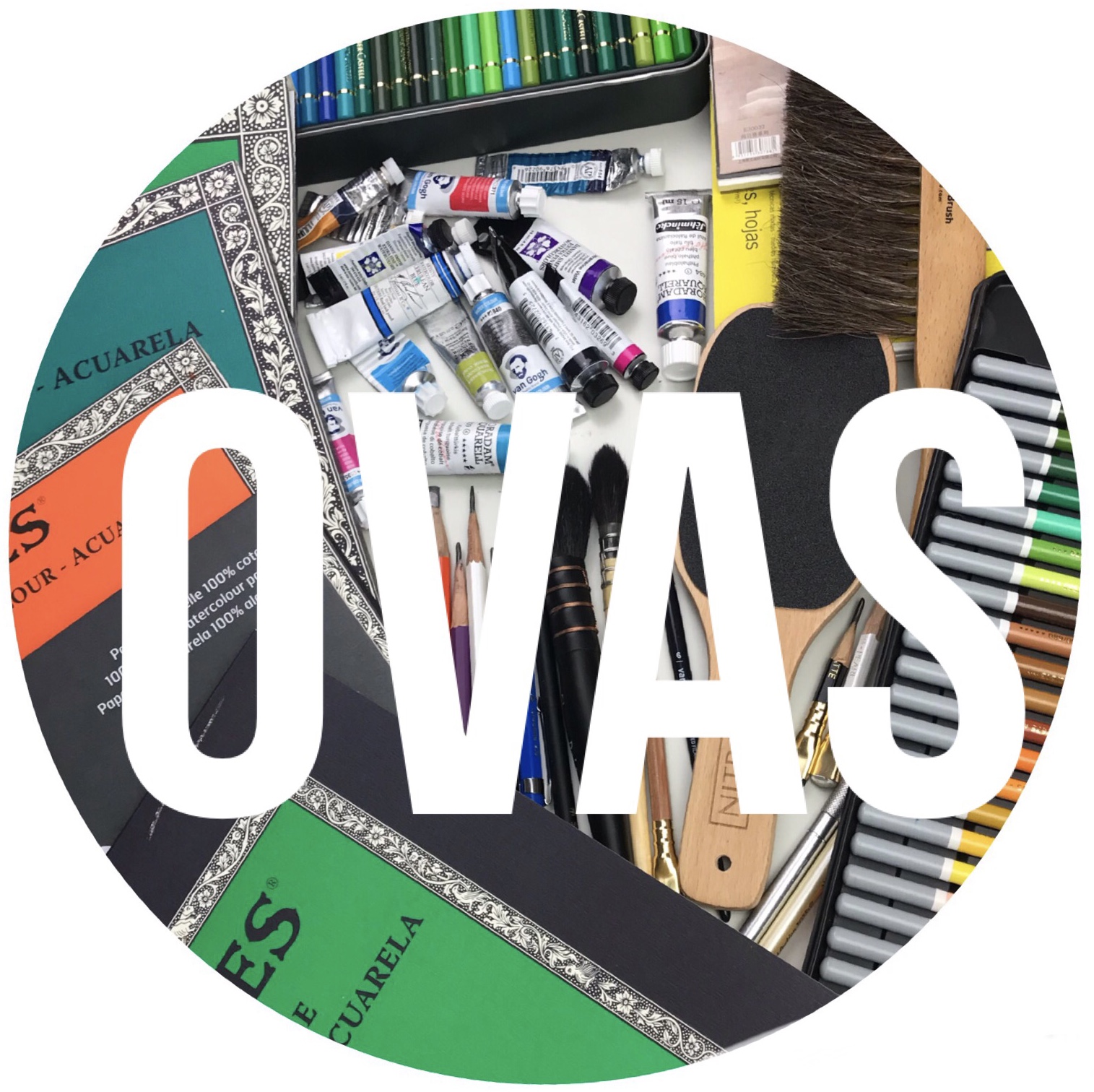Step into a world of mist, light, and emotion with this expressive watercolor journey. In this course, you’ll discover how to paint not just places, but atmospheres. You’ll learn to capture the feeling of quiet woods, distant villages, lonely roads, and oceans wrapped in fog.
Elevate your skills and explore new artistic horizons!
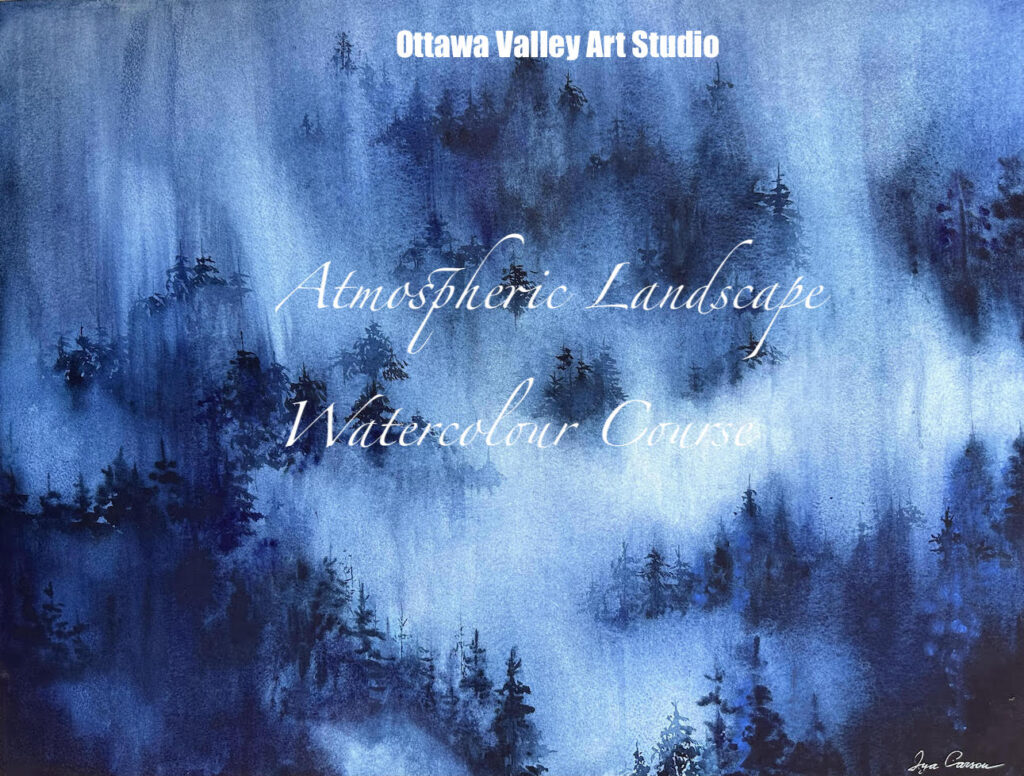
What this course gives you?
In this course, you will upgrade your skills and broaden your artistic vision. You will become confident in building atmospheric depth and mood in your work. You’ll work with a soft, expressive watercolor palette, and explore how to layer color, blur edges, and balance light.
You will gain experience painting:
- misty woods and glowing tree lines
- dynamic skies and gentle ocean waves
- winding roads and reflected puddles
- coastal light and dramatic headlands
- golden-hour lagoons and quiet shorelines
- luminous villages at dusk
By the end of the course, you will not only feel more confident using watercolours, you will see your landscapes come alive with atmosphere, emotion, and story.
What is in the course?
This course includes six fully guided lessons, each dedicated to a different type of atmospheric landscape. You will not only explore the theory of atmospheric perspective but also bring it to life through hands-on practice with watercolour techniques.
Over six sessions, you’ll paint a wide range of natural scenes; from foggy forests and quiet country roads to breezy ocean shores and glowing village evenings. Each class introduces a unique subject designed to help you develop skills in texture, depth, light, and mood.
By the end of the course, you will have completed nearly 30 practical exercises and created 7 beautiful landscape paintings. In addition, you will study the history and characteristics of selected paints while building your own Paint Library – a valuable reference you can continue to use long after the course is complete.
All references and templates will be provided prior to the first day of the course. Please print them or ensure they are available on your device(s) for use during class.
Zoom will be used to host live interactive classes.
After the class you will get a private access to full Zoom class recordings with all questions and discussions. Additionally, you will receive access to a fully edited video tutorial from the ATMOSPHERIC LANDSCAPE. BASIC to continue learning at your own pace.
Homework reviews will be provided weekly according to the schedule.
The online study process will be simple, stress free and understandable for every student. There will be a lots of exercise that will help you to become confident in loose style landscape painting.
This course is suitable for all levels of watercolour skill. Although some experience would help you to feel more comfortable.
Once you register and enroll for this course you will get access to the course content and ZOOM link.
ZOOM package for online study with full teacher support START Thursday October 2, 2025 Time: 7 PM - 9 PM EST 6 ZOOM classes with private access to class video recordings 6 video homework reviews PLUS Lifetime access to all video tutorials from the package ATMOSPHERIC LANDSCAPE. BASIC
The schedule:
Lesson 1
October 2, 2025 @ 7 PM EST
Trees
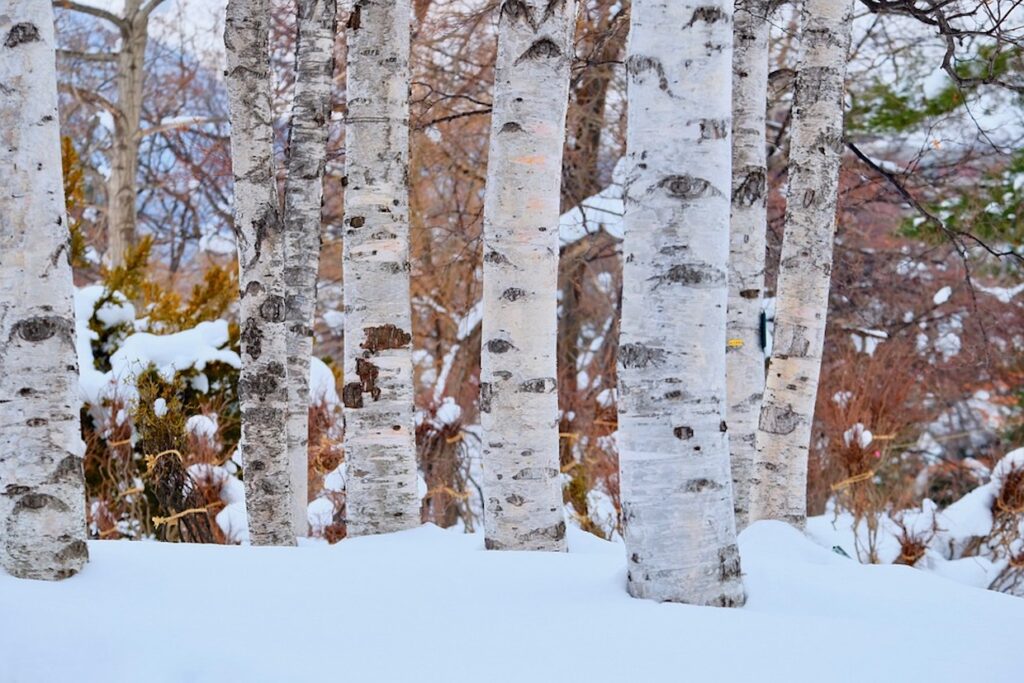
In this lesson you will learn about materials and tools. In this lesson, we explore the simple beauty of lone trees and open space. You will learn how to paint tree shapes with character, show volume through tonal contrast, and suggest subtle atmosphere using layered washes. We’ll study how light travels through the landscape and how to express distance even in the most minimal composition.
Lesson 2
October 16, 2025 @ 7 PM EST
Forest
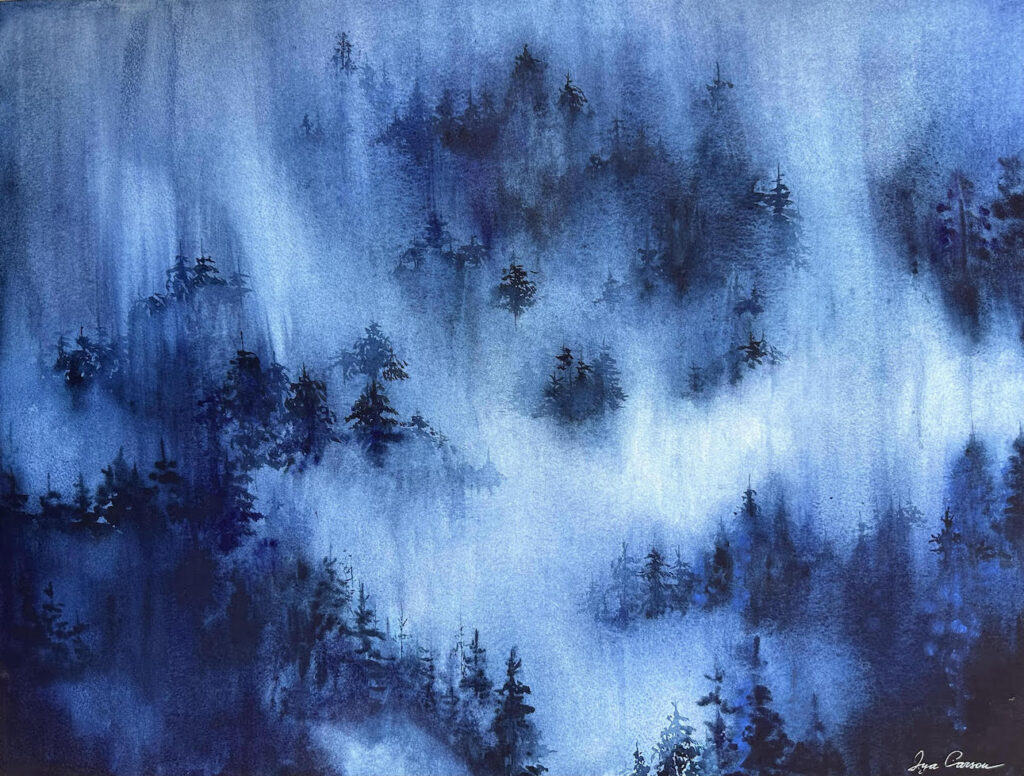
Enter the quiet mystery of a foggy forest. You will work with overlapping forms, muted colour palettes, and soft transitions to create the illusion of depth and space. In this class, we’ll study how to layer trees, soften outlines with mist, and use cool-warm contrasts to suggest movement through the woods.
Lesson 3
October 23, 2025 @ 7 PM EST
Road
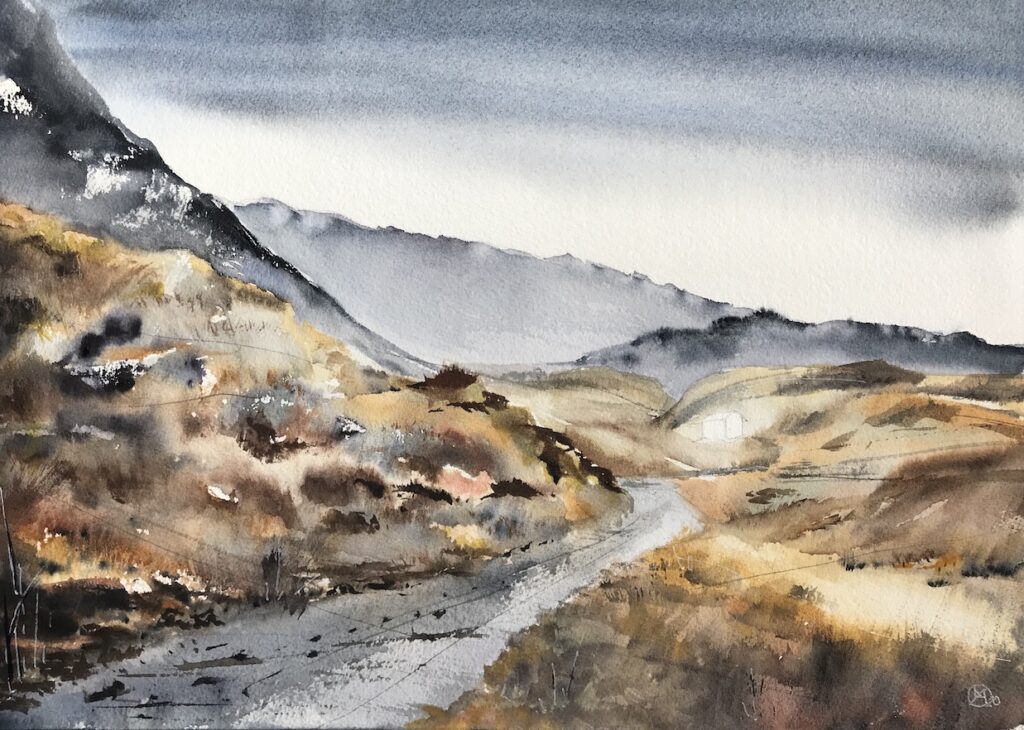
This lesson leads you down a winding country road, surrounded by open fields and trees. Roads in landscape painting invite the viewer in – here, you’ll learn how to use composition and perspective to create rhythm and lead the eye. We’ll practice mixing greys, using expressive brushwork, and controlling values to show direction and distance.
Lesson 4
October 30, 2025 @ 7 PM EST
Ocean
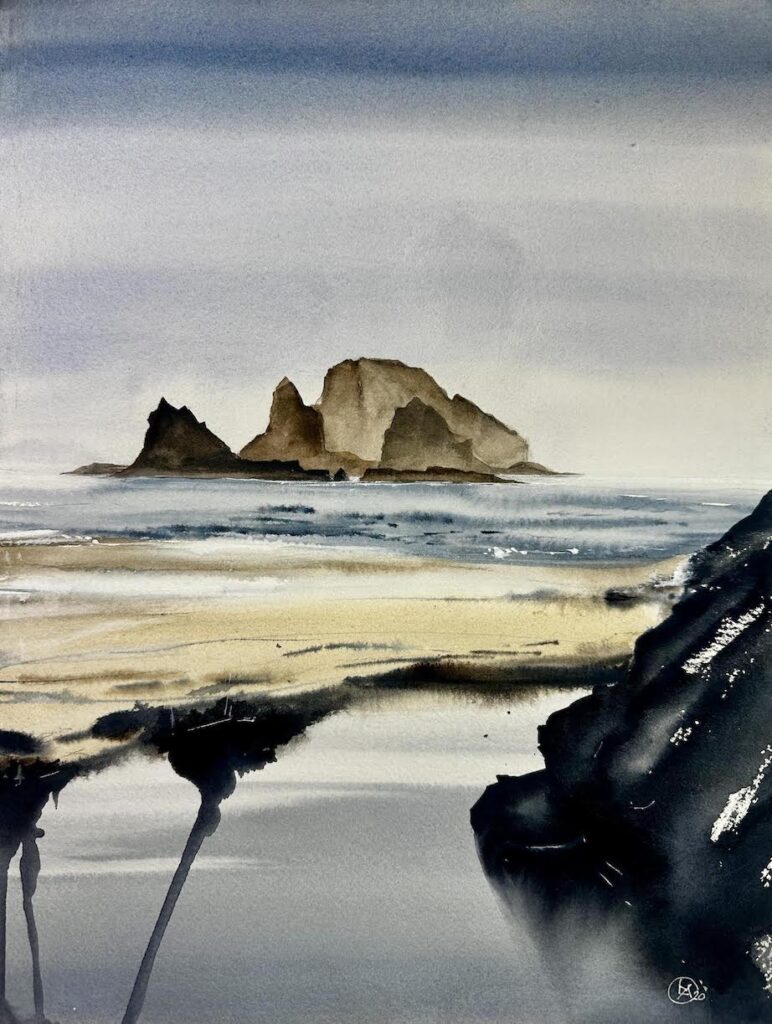
In this class, we turn to the open sea, where sky and water blend together in a breath of light. You will paint waves and distant surf, using controlled wet-on-wet techniques to suggest reflection and movement. Learn how to create a strong horizon line, paint foamy edges, and shift color temperature across the ocean surface.
Lesson 5
November 6 2025 @ 7 PM EST
Laguna
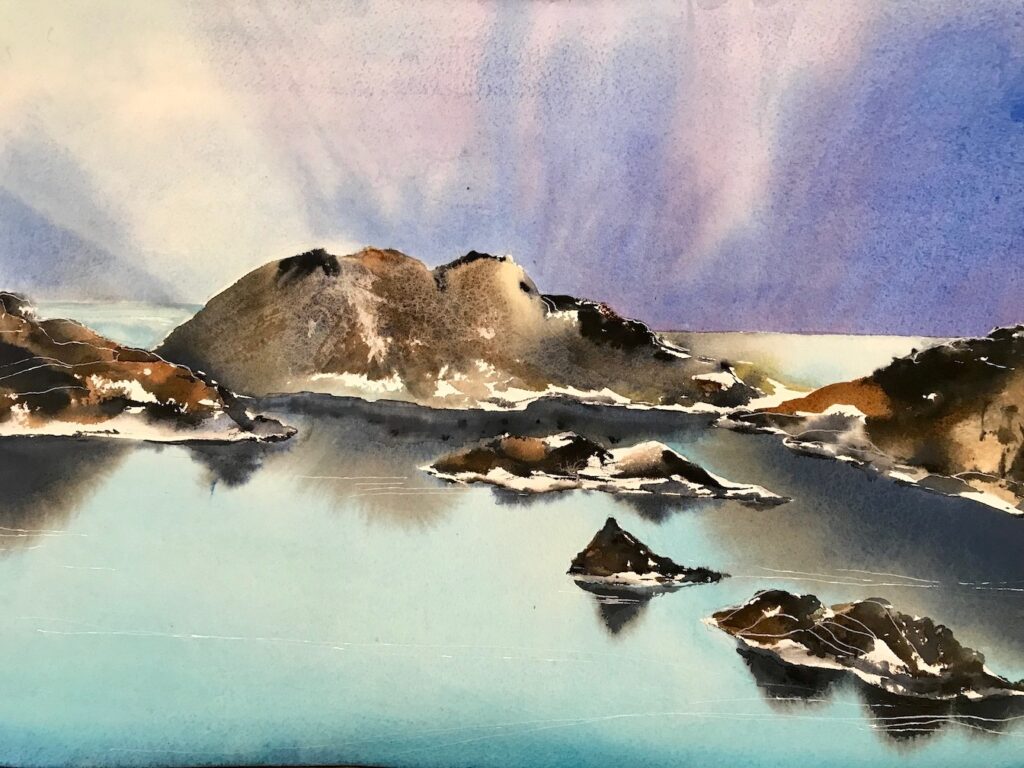
In this session, you’ll paint a sun-drenched lagoon, where land meets sky in glowing reflections. This class is an invitation to explore transparent layers, sunlit skies, and reflections on calm water. You’ll learn to play with warm colors, control your edges, and create atmosphere through tonal gradation.
Lesson 6
February 5, 2026 @ 7 PM EST
Village
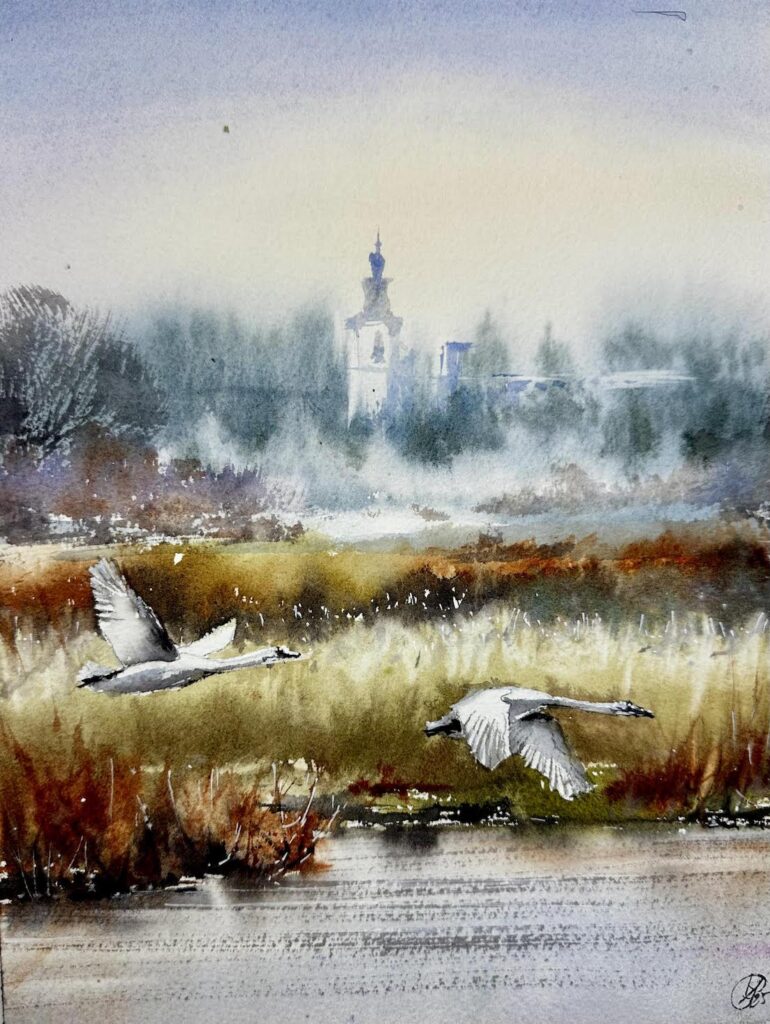
We end the course in a small village at dusk, where warm roofs and evening light invite storytelling. This final lesson brings together everything you’ve learned—light, texture, depth, and emotion. You’ll work with architectural forms and soft shadows to create a luminous village scene full of atmosphere and charm.
Student’s work
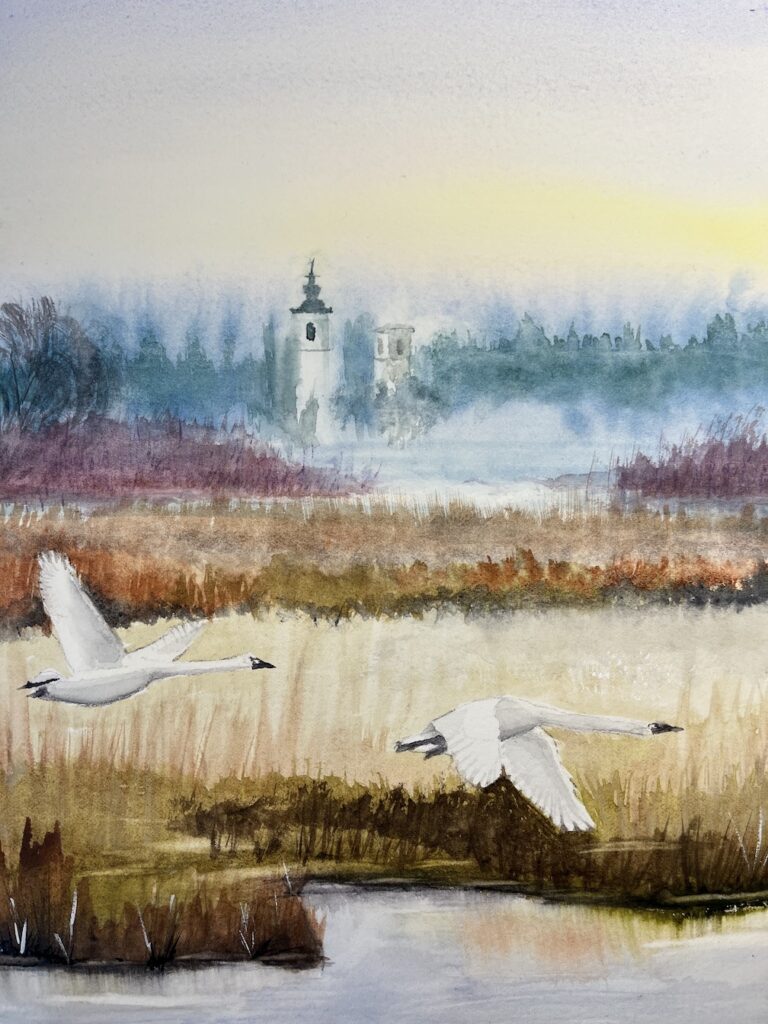
Laura 2025 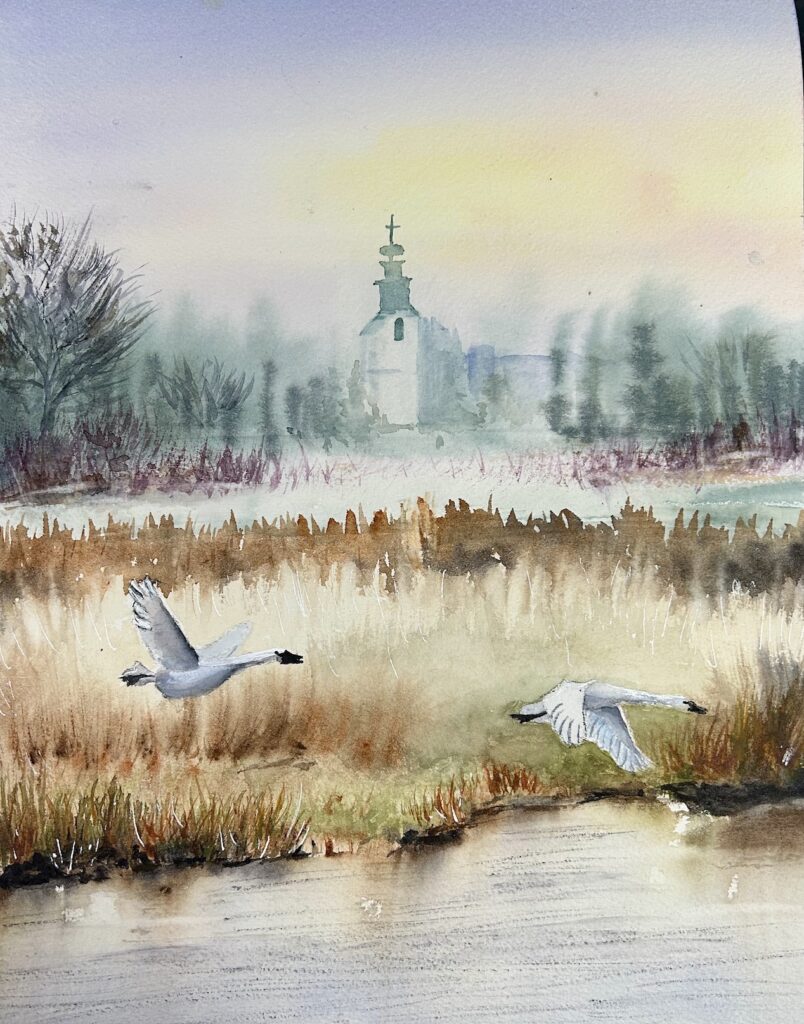
Jennifer 2025 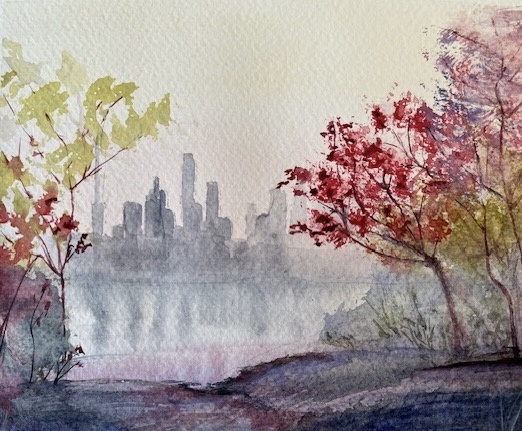
Laura 2025 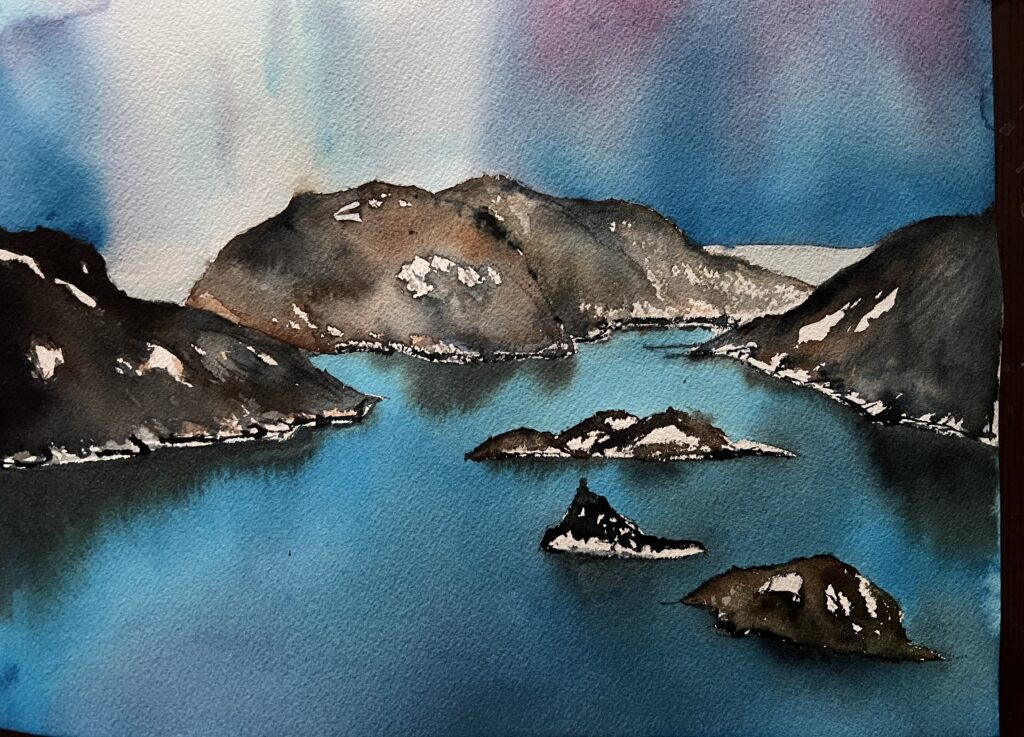
Sue 2025 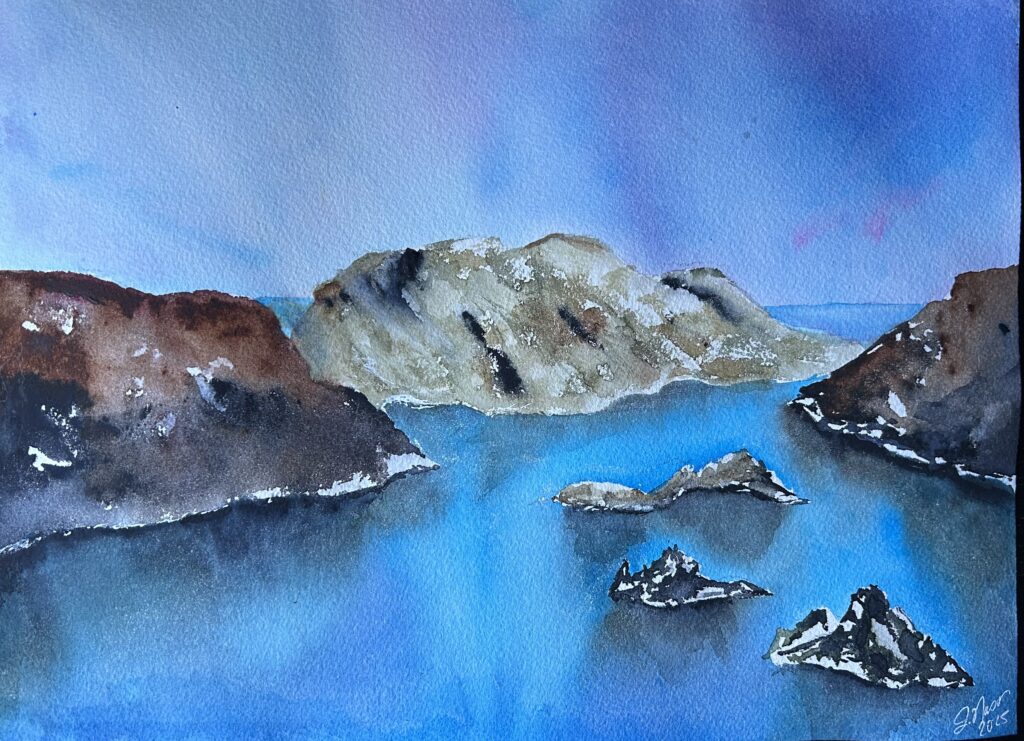
Jennifer 2025 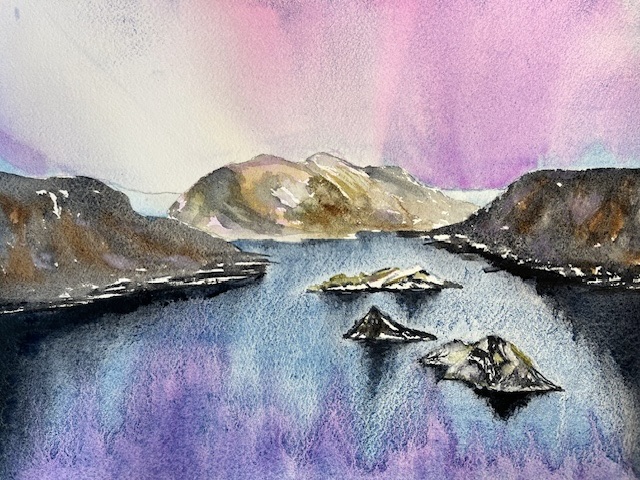
Laura 2025 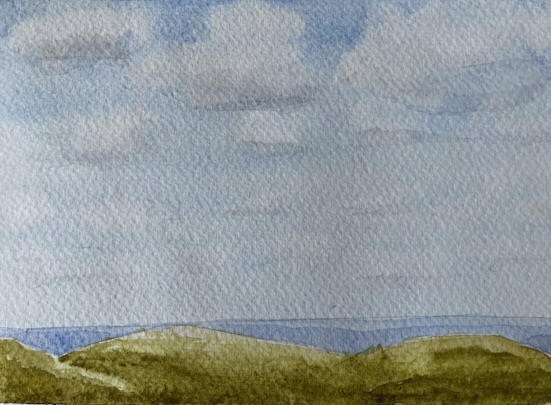
Laura 2025 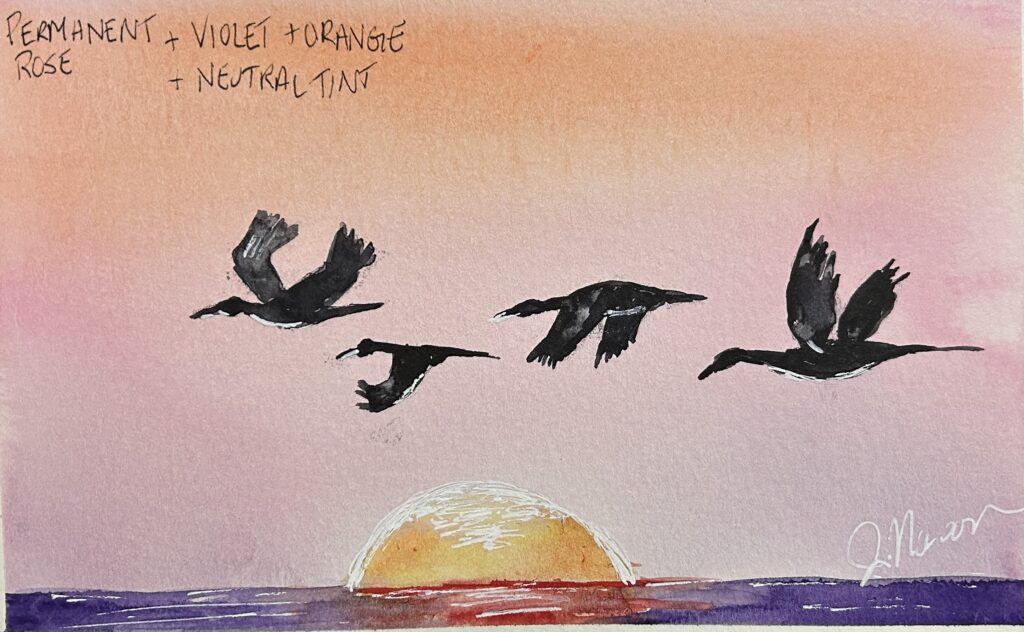
Jennifer 2025 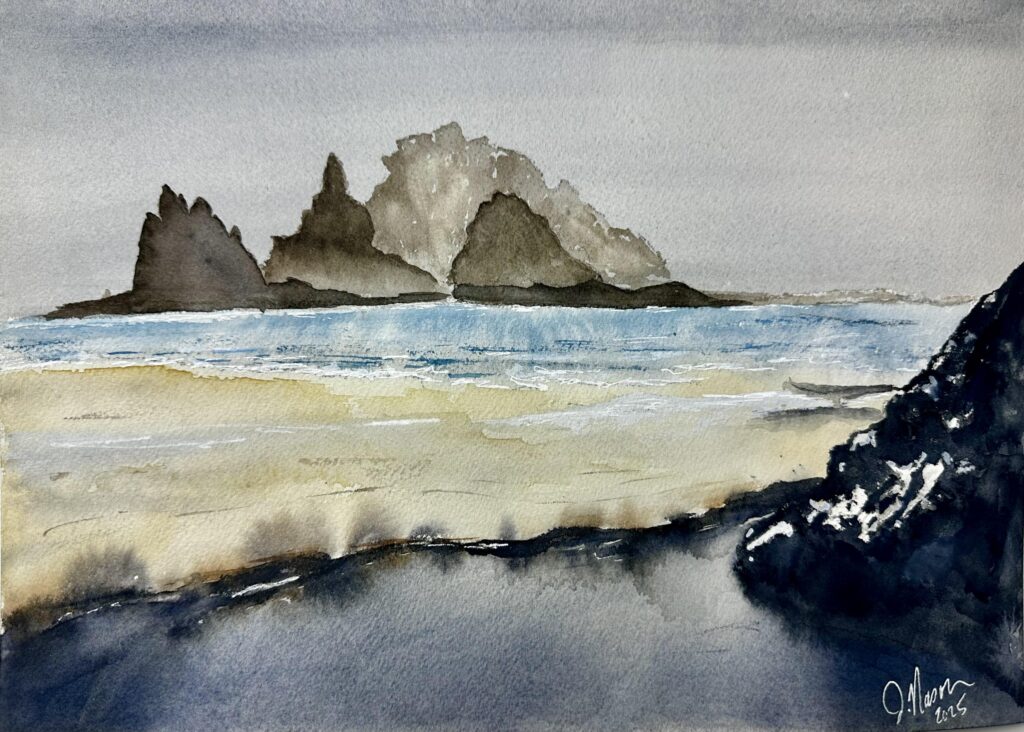
Jennifer 2025 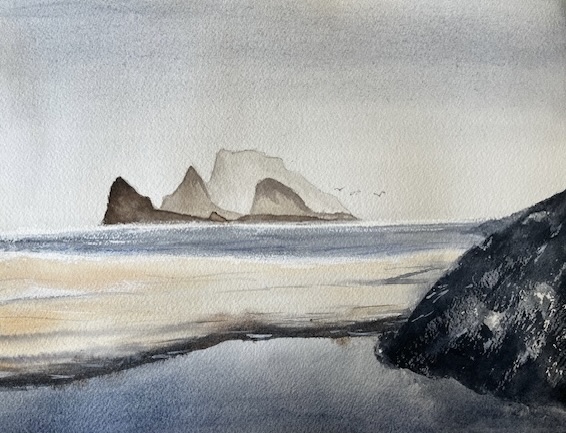
Laura 2025 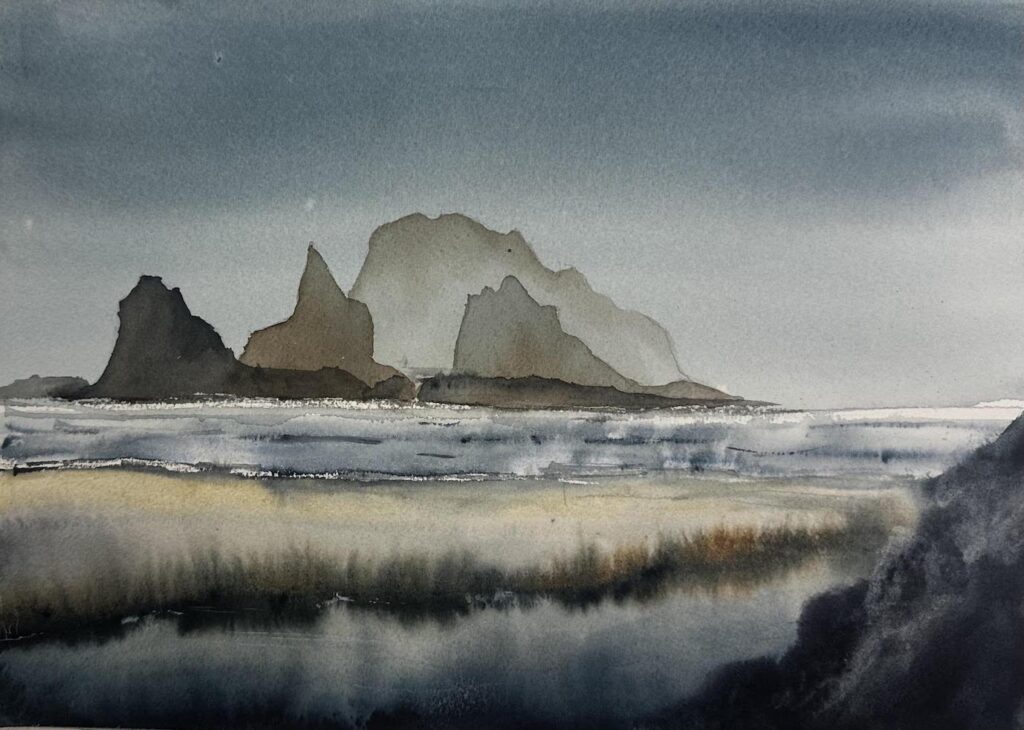
Sue 2025 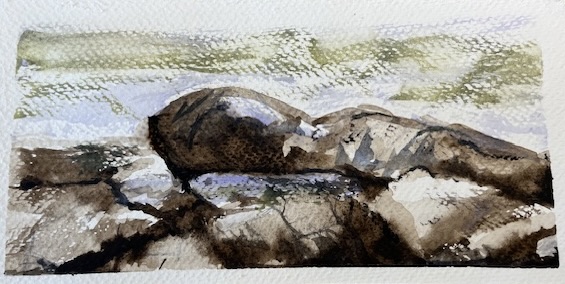
Laura 2025 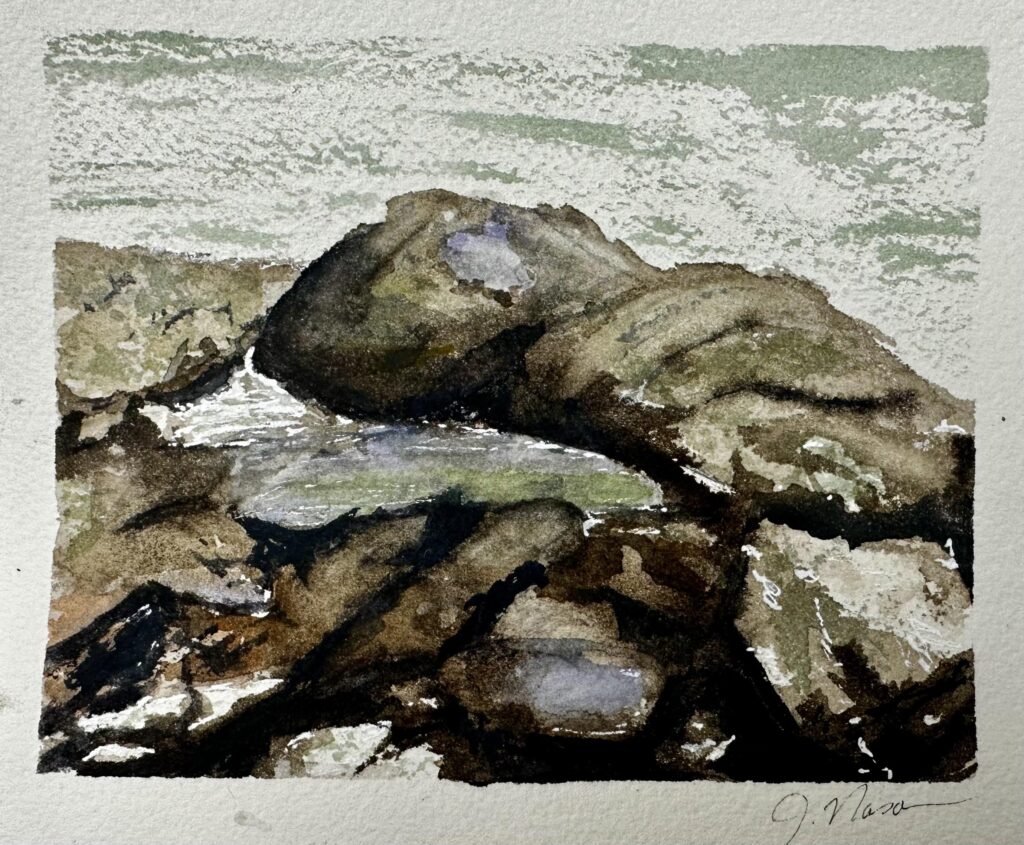
Jennifer 2025 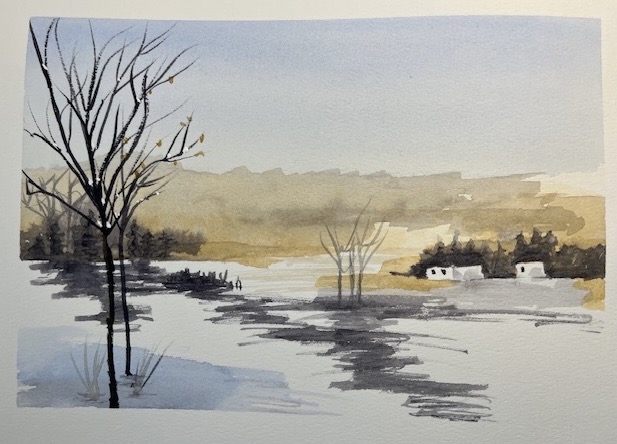
Laura 2025 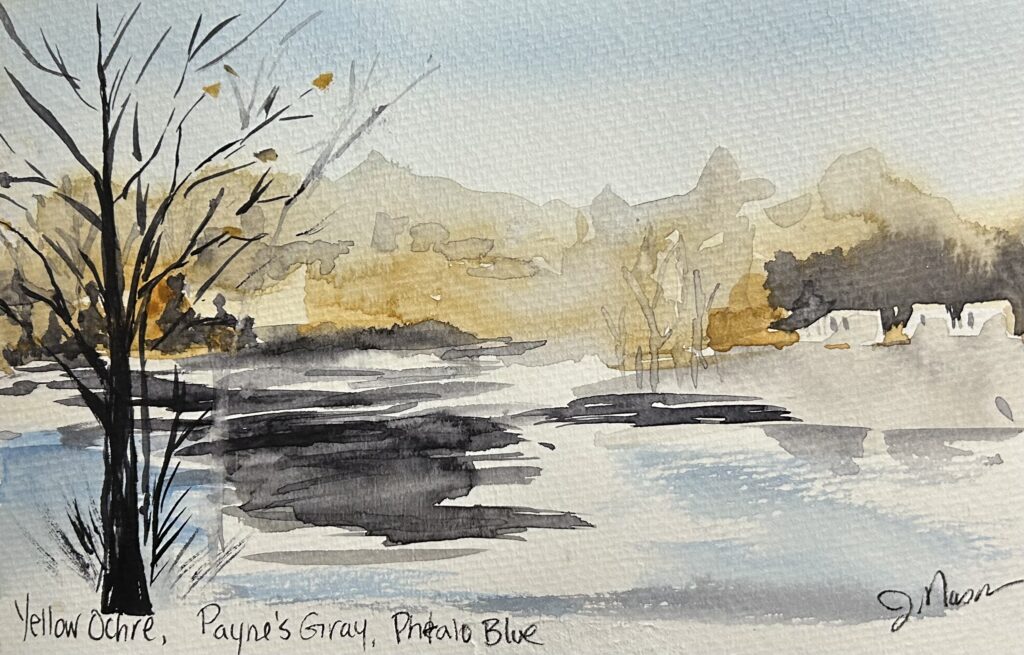
Jennifer 2025 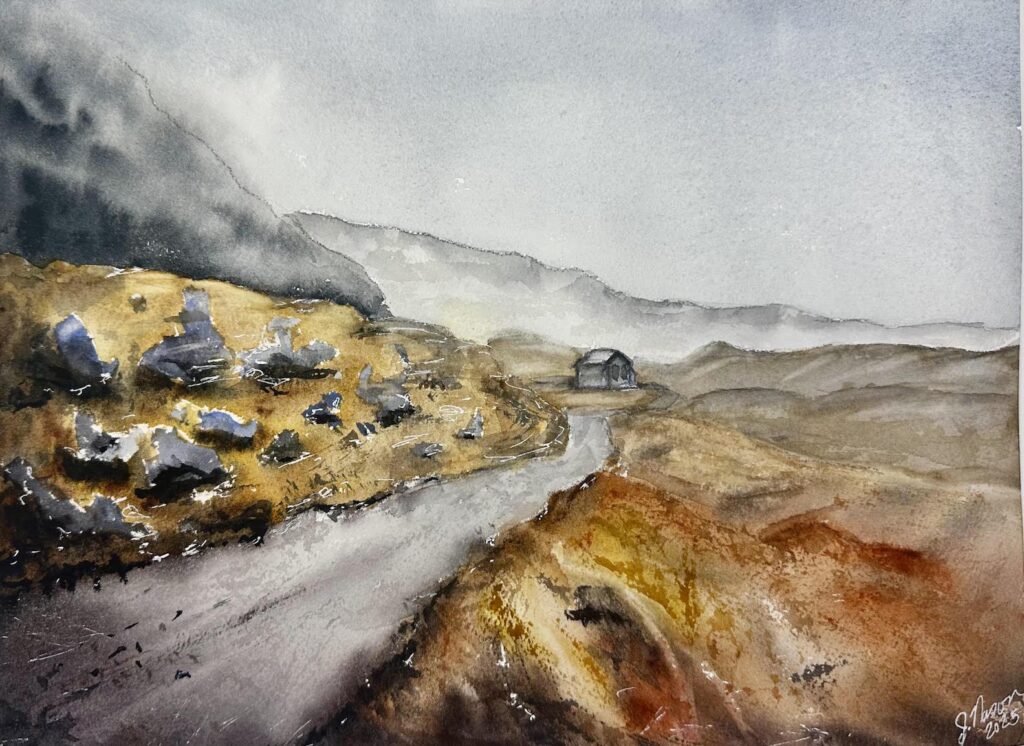
Jennifer 2025 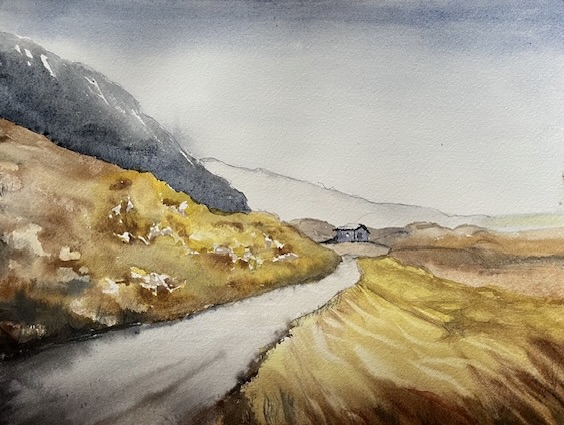
Laura 2025 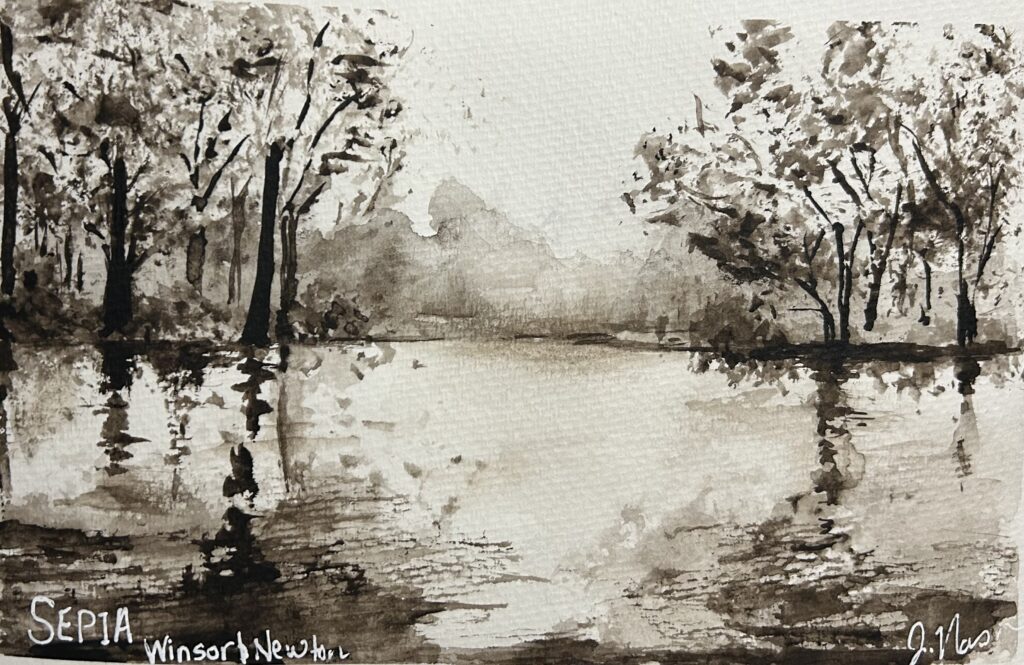
Jennifer 2025 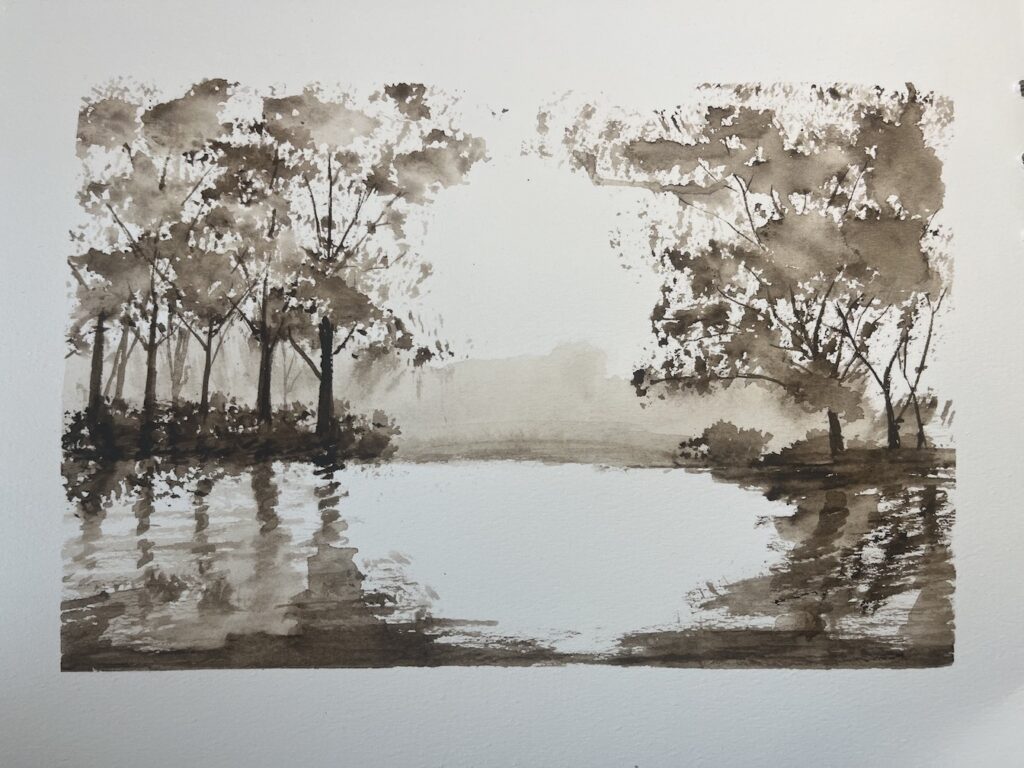
Laura 2025 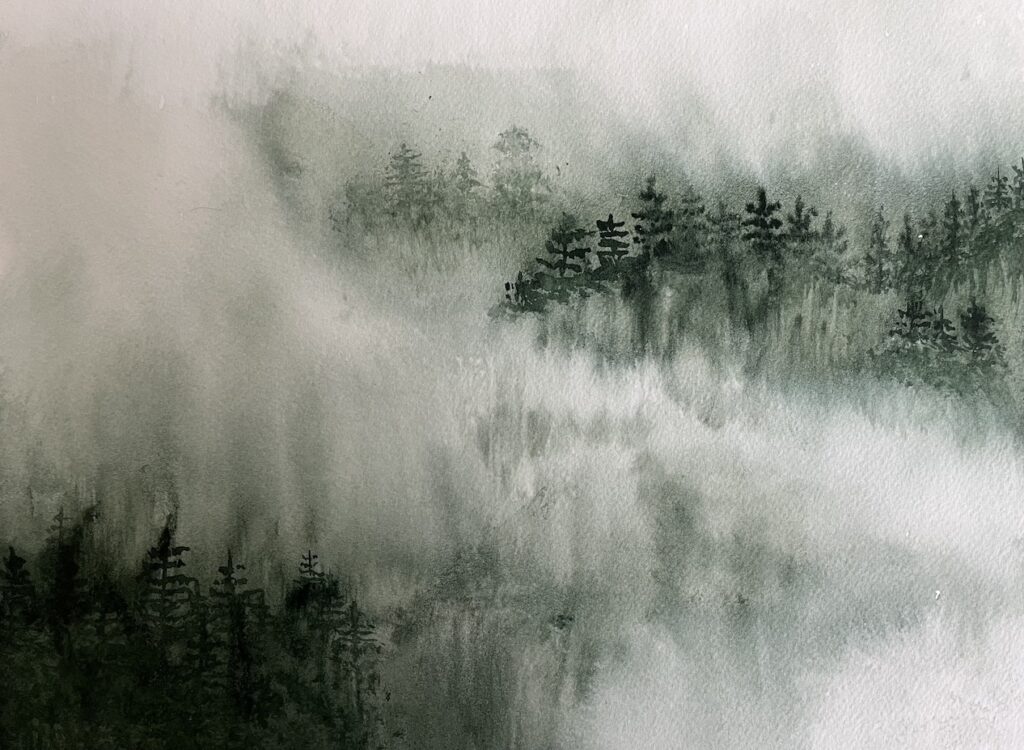
Laura 2025 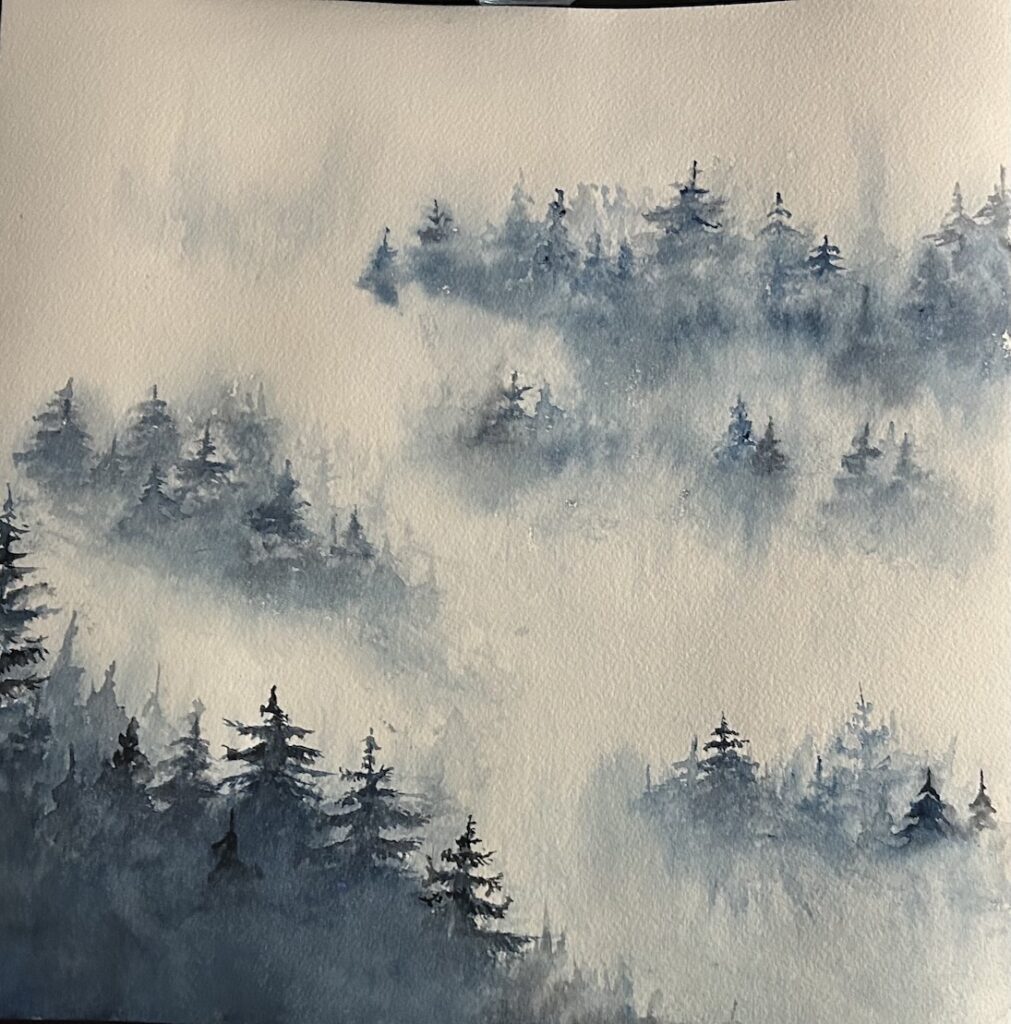
Jennifer 2025 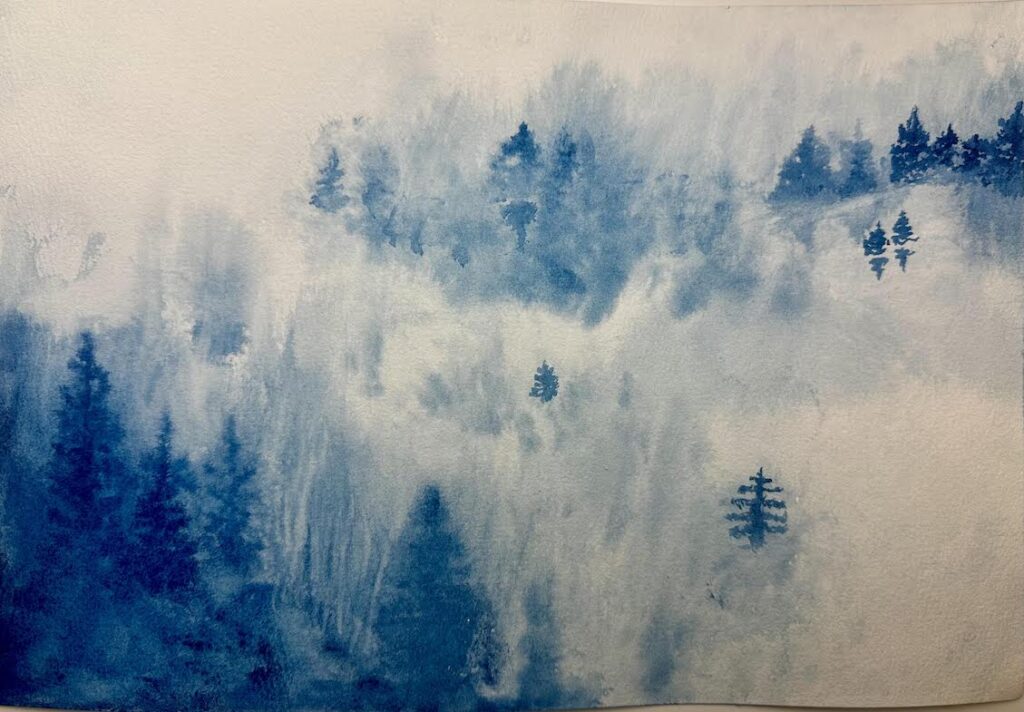
Sarah 2025 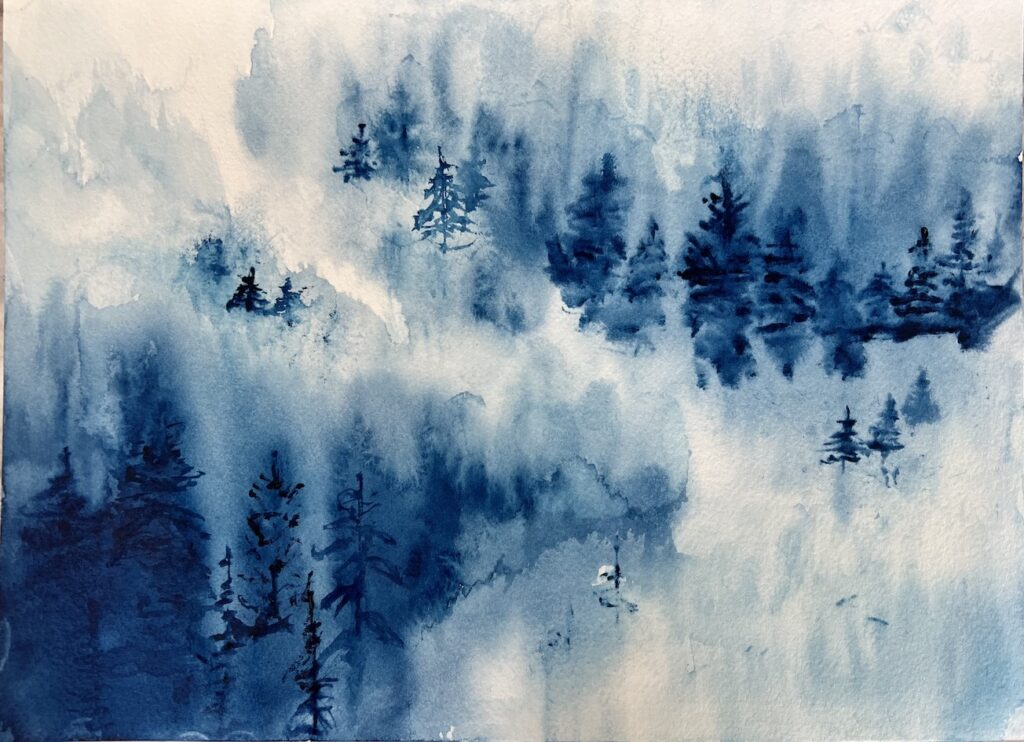
Sue 2025 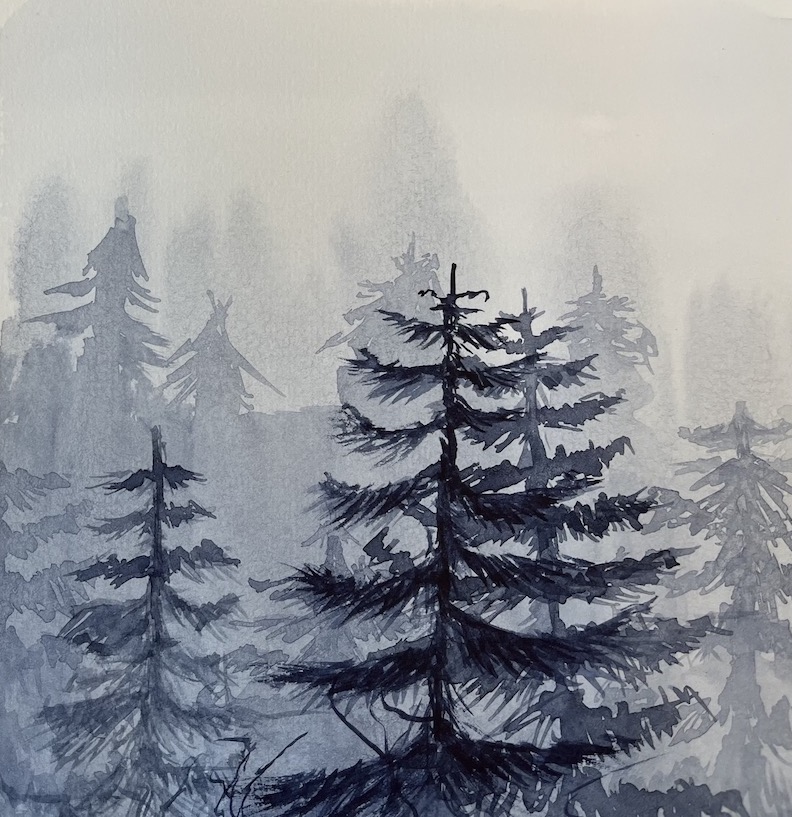
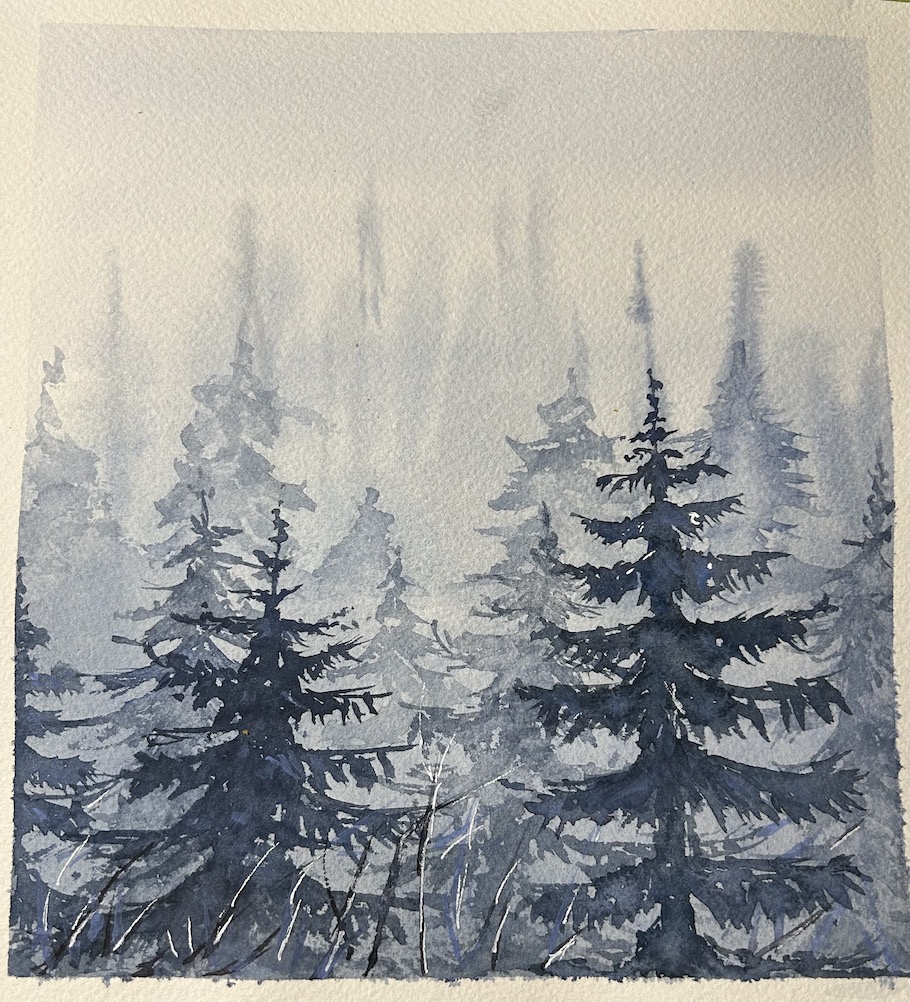
Jennifer 2025 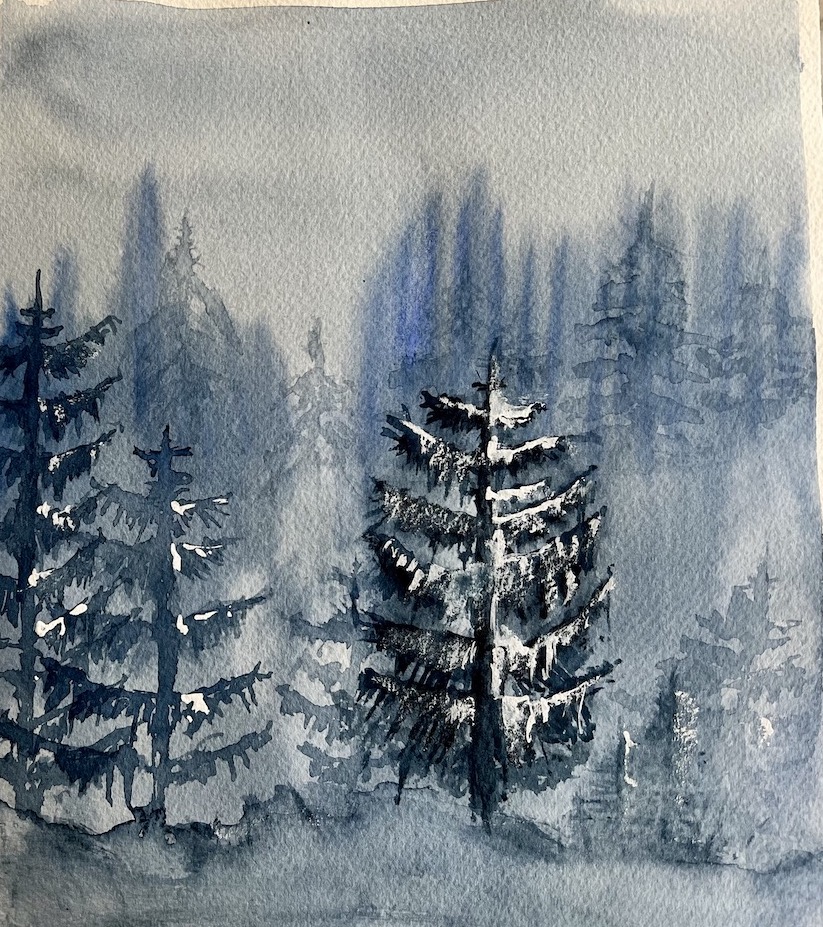
Sue 2025 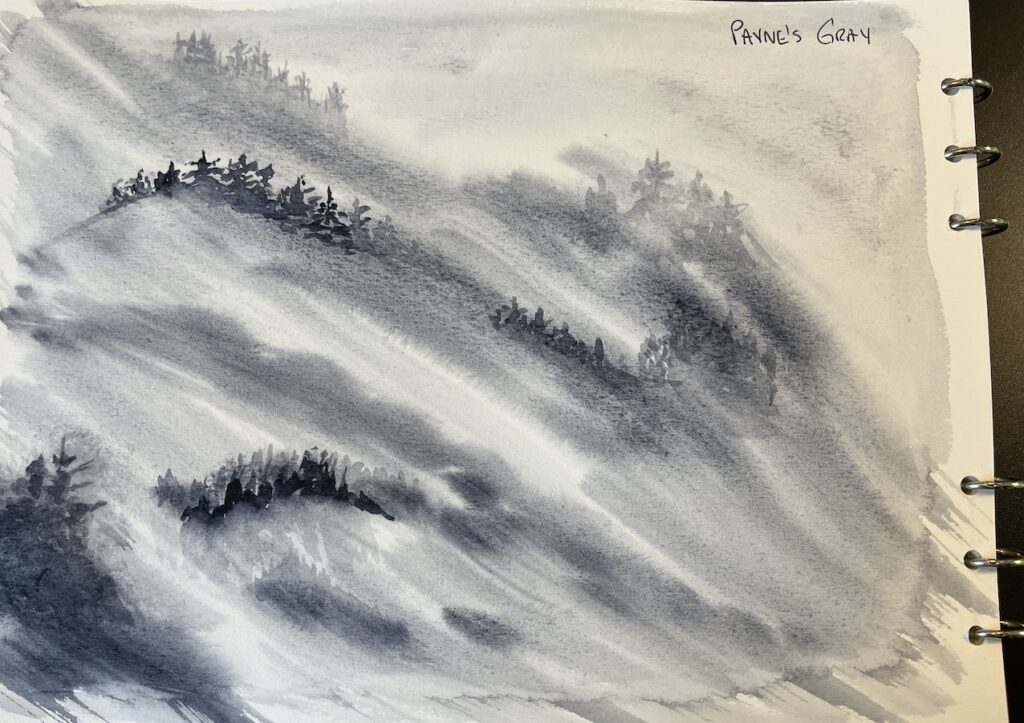
Laura 2025 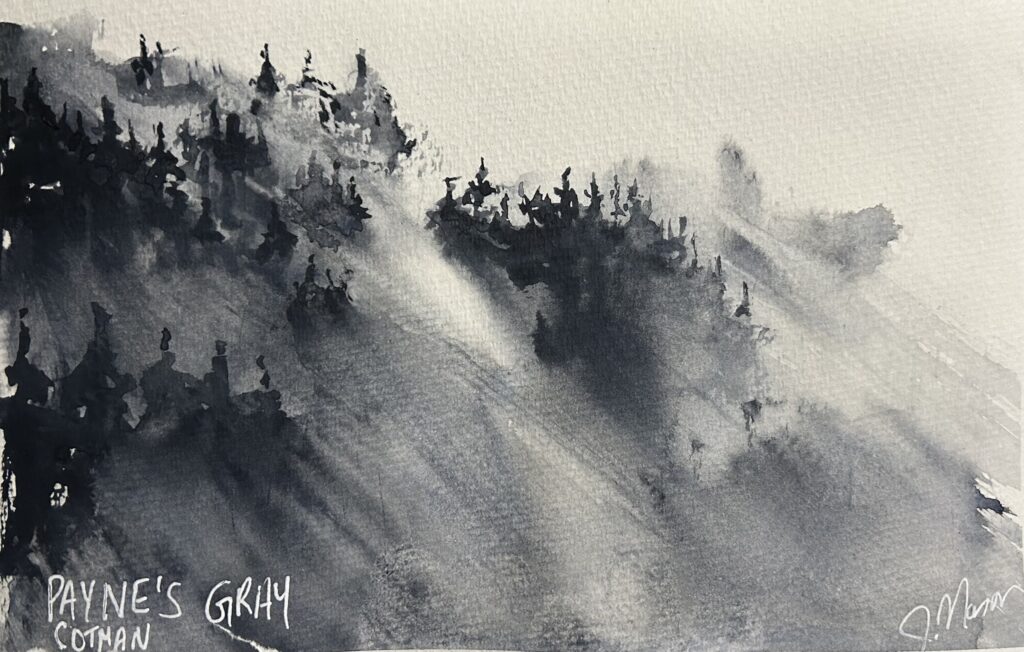
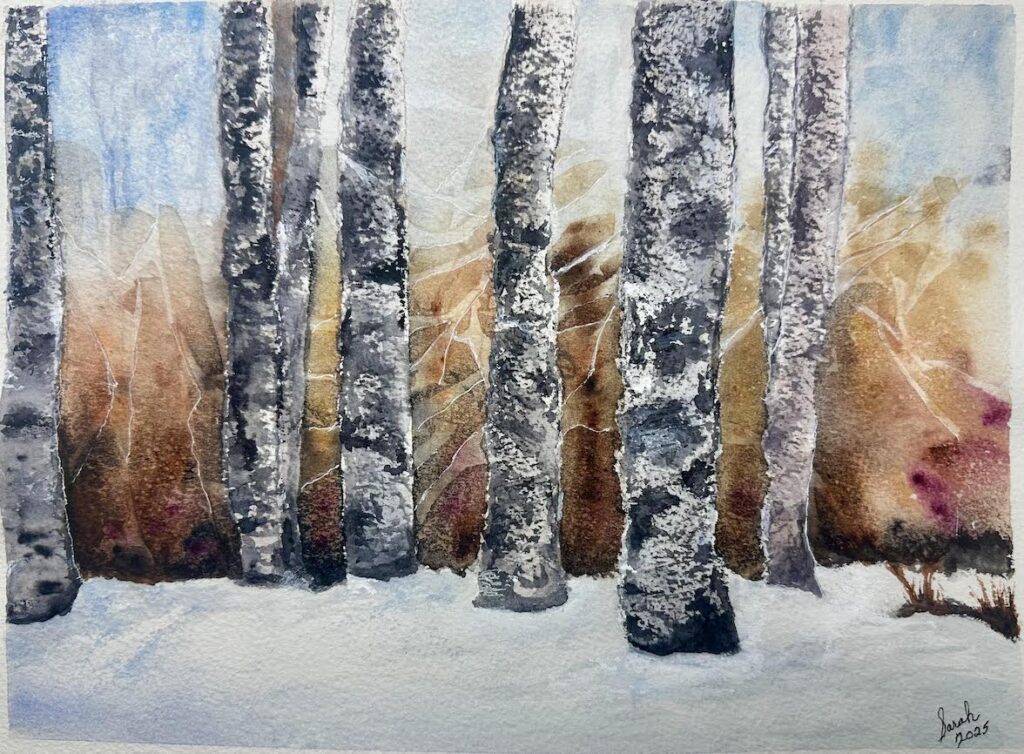
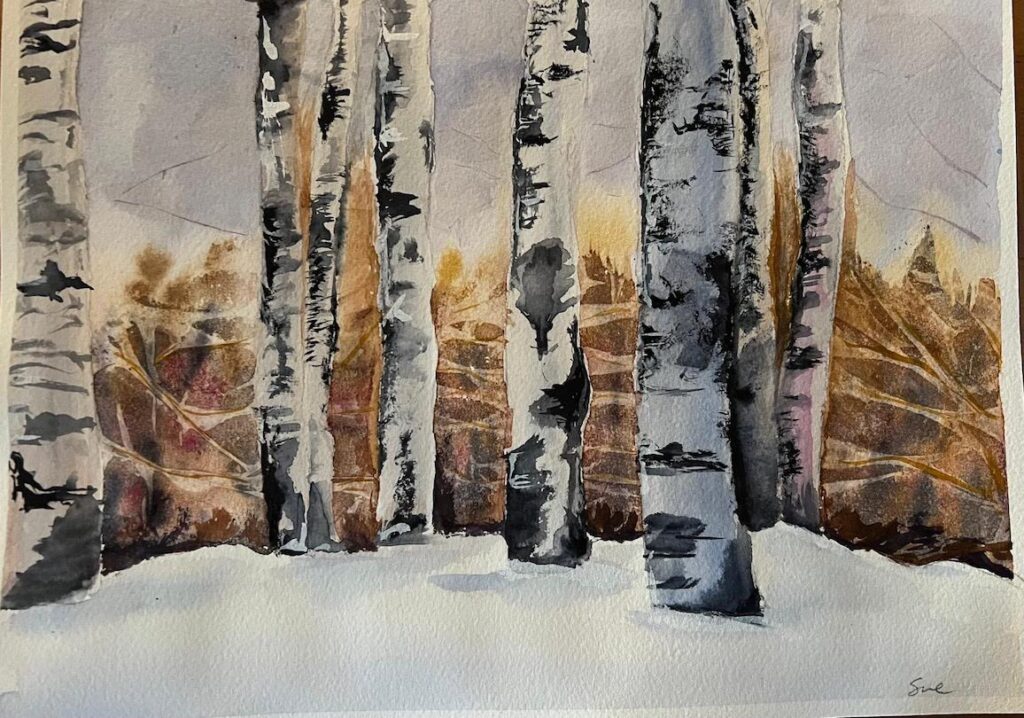
Sue 2025 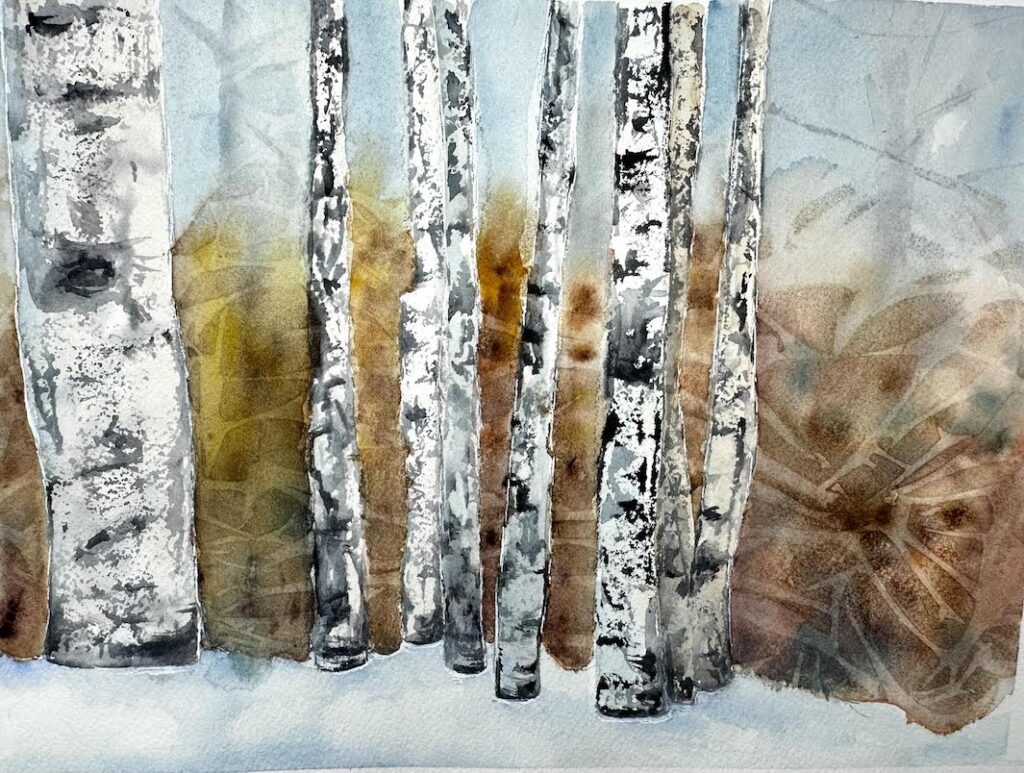
Jennifer 2025 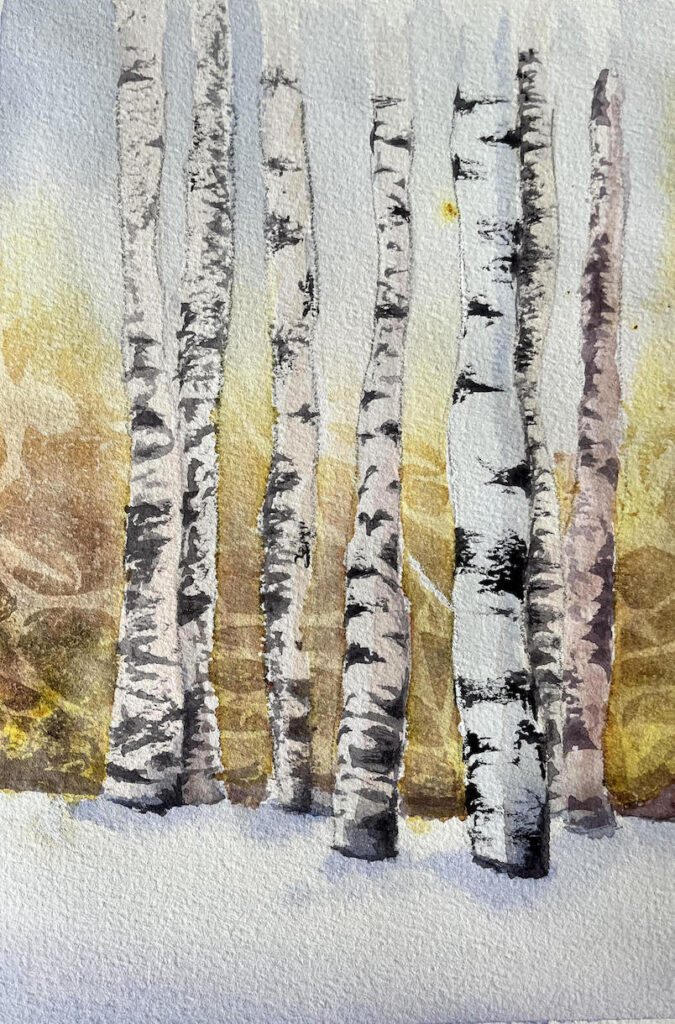
Laura 2025 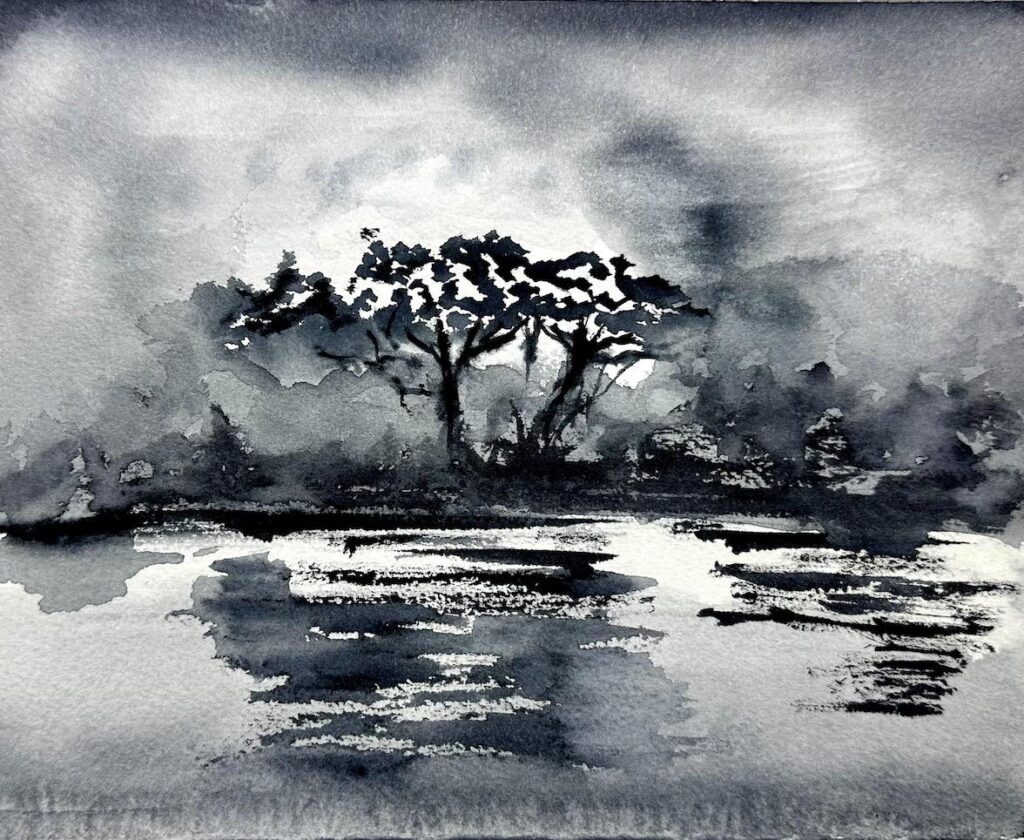
Sue 2025 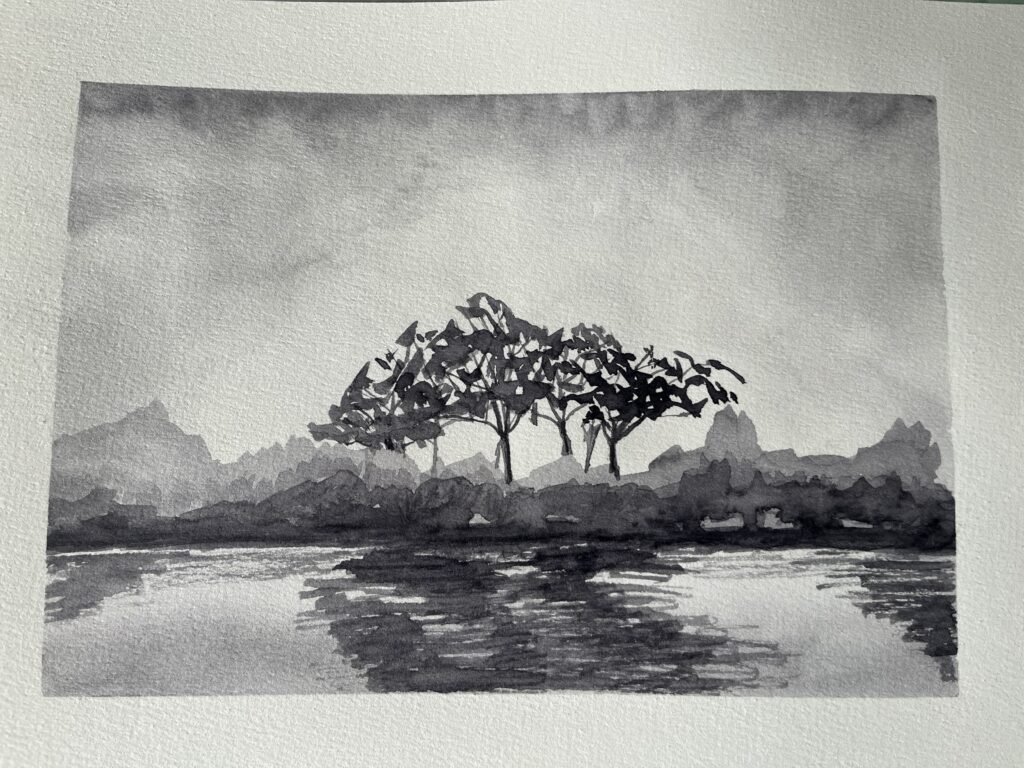
Laura 2025 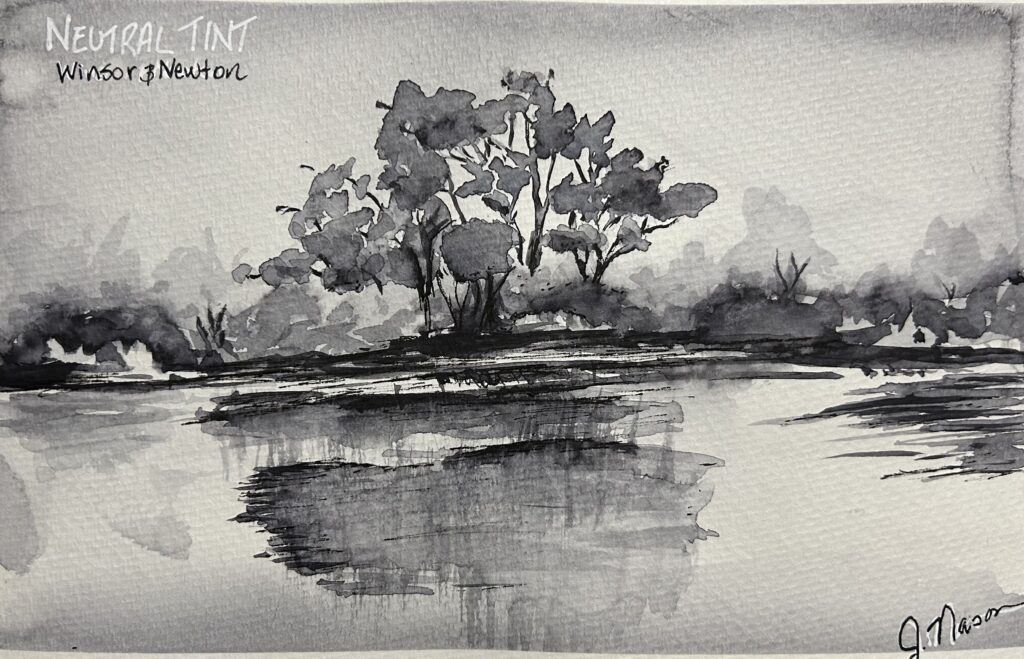
Jennifer 2025 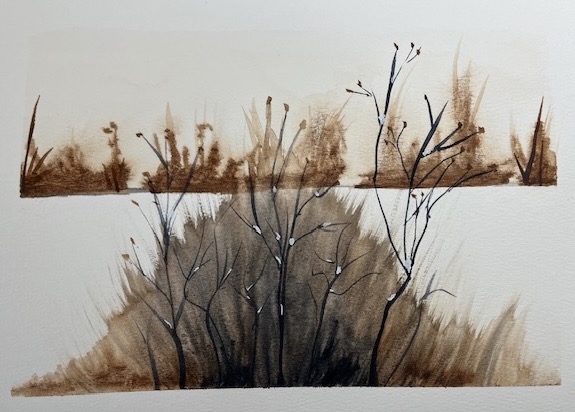
Laura 2025 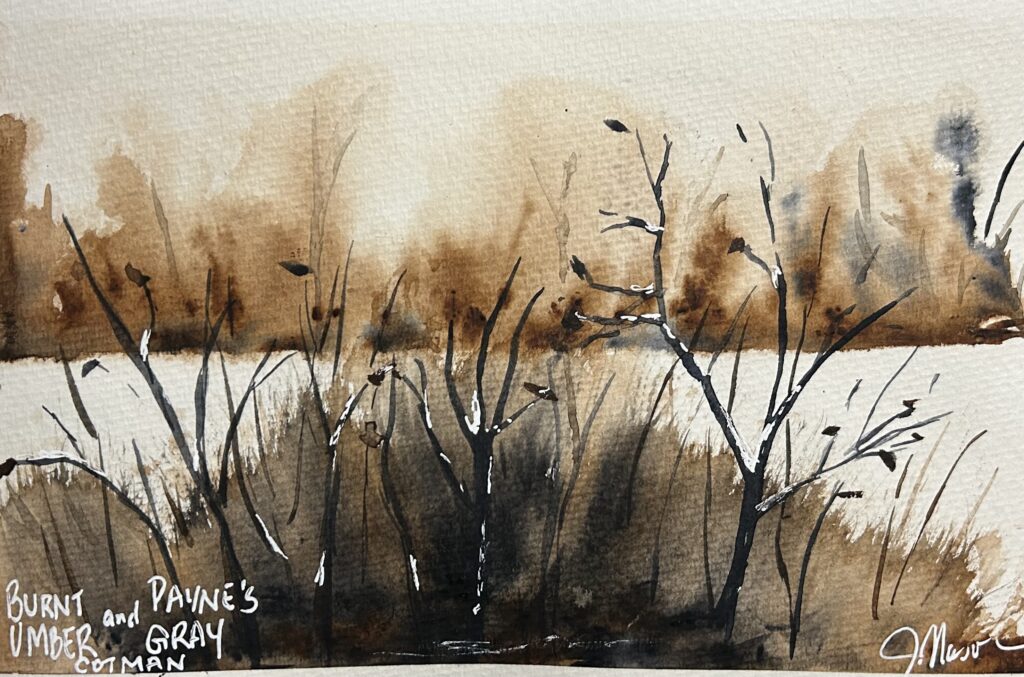
Jennifer 2025 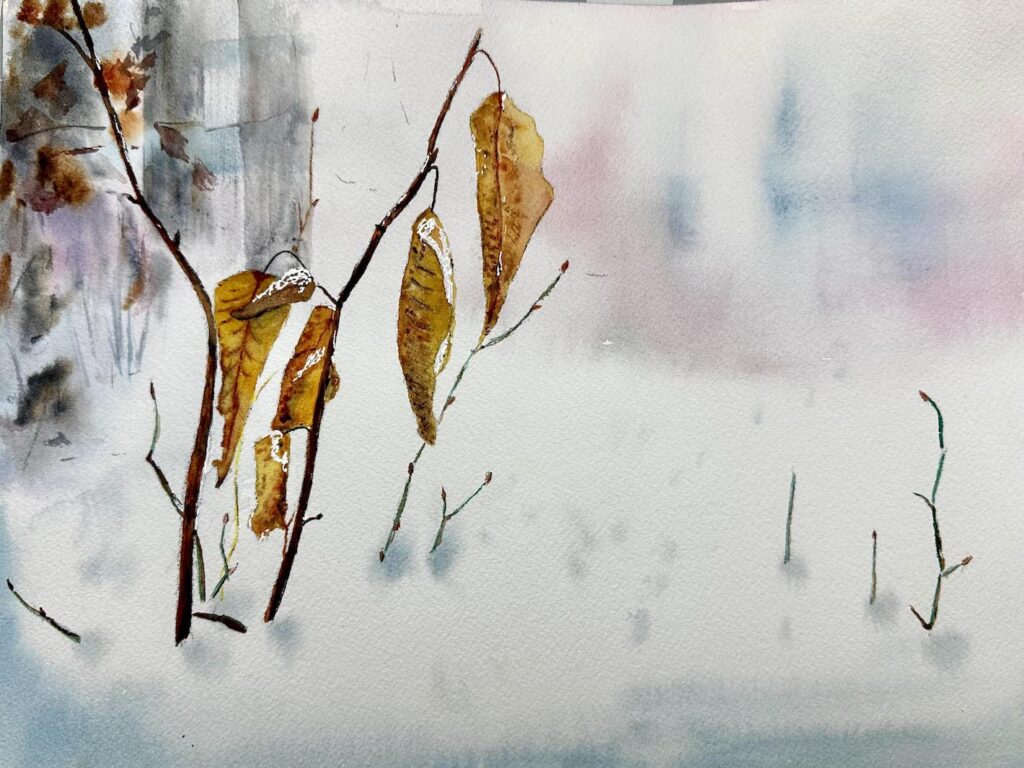
Jennifer 2025 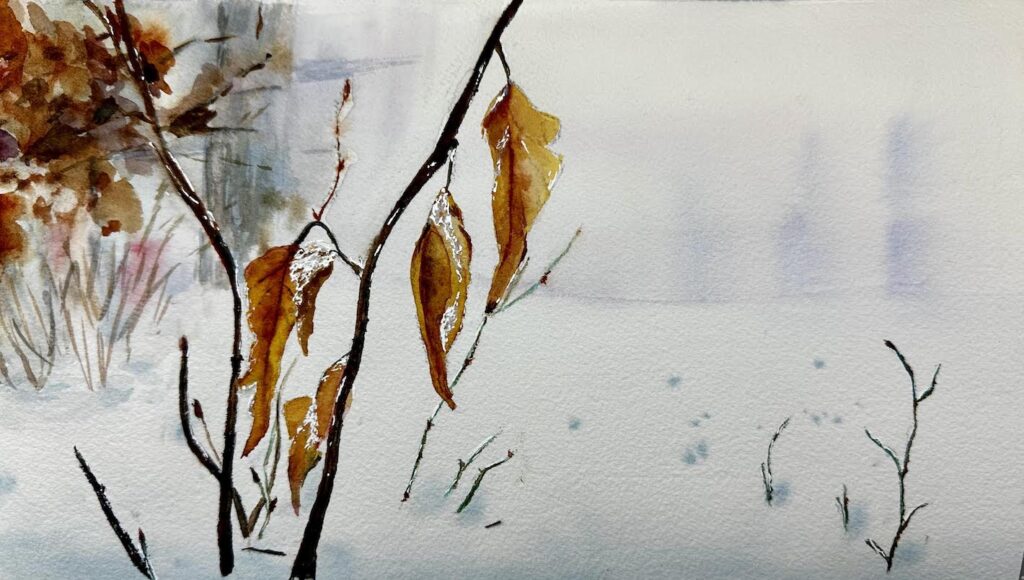
Jennifer 2025 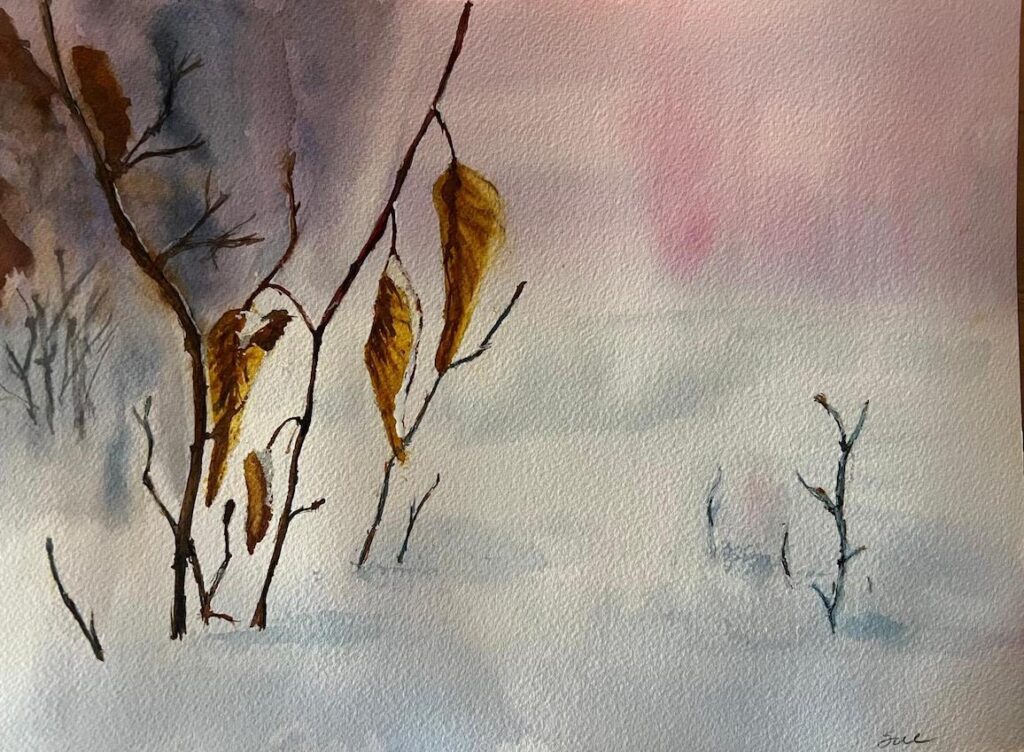
Sue 2025 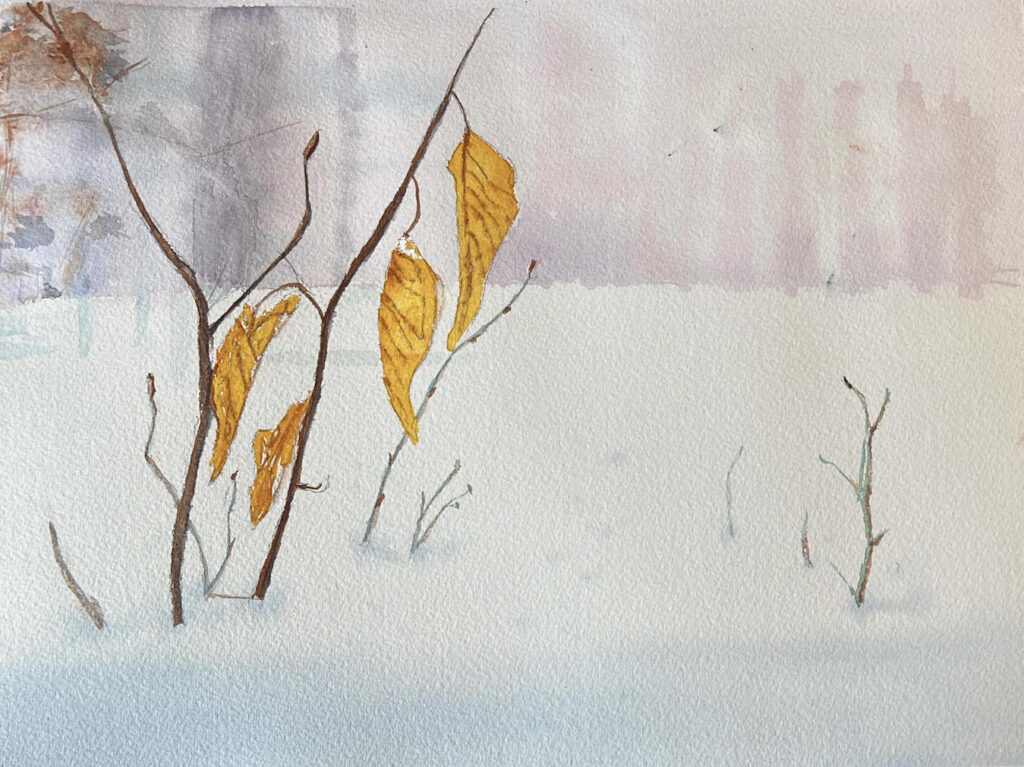
Laura 2025
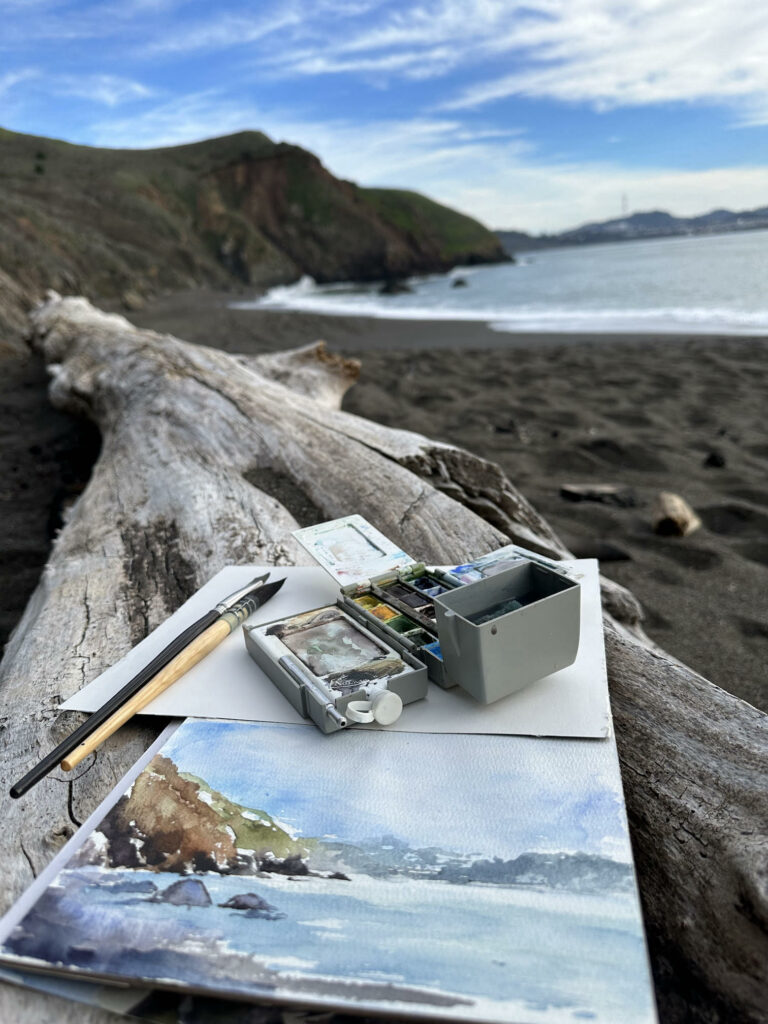
Materials that I am going to use during the course;
This list is only for your information, there is no need to get exactly what I am using:
If you are beginner, please read this article (link)
To accomplish all exercises and paintings from this course you will need the following materials:
Paper:
- Printer paper: a few pieces for printing references, and a few pages for practical exercises
- Parchment paper: couple small pieces for practical exercises
- Watercolour paper: a few small pieces (half of printer paper) and one piece (at least A4) of watercolour paper per lesson, the best is 100% cotton, 300g/m2, cold press or rough surface, recommended brands ARCHES, BAOHONG, FABRIANO
- To make Paint Library you will need 22-24 pieces of watercolour paper, any type of paper will work or Watercolour Art Journal, 48 pages. For demonstration I used Strathmore Art Journal Strathmore (link)
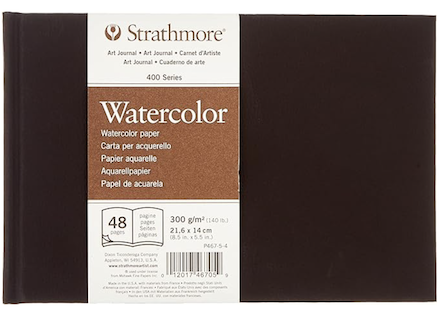
Watercolour brushes:
- Round # 10-12, # 6 and # 2; Escoda, Paul Rubens (link) or Dainayw (link)
- calligraphy brush (link)
- flat synthetic brushes: 3/4 and 1 1/2 or larger (Grumbacher, Santa Fe Art Supply, Connoisseur )
- Liner brush (Princeton, Artist’s Loft)
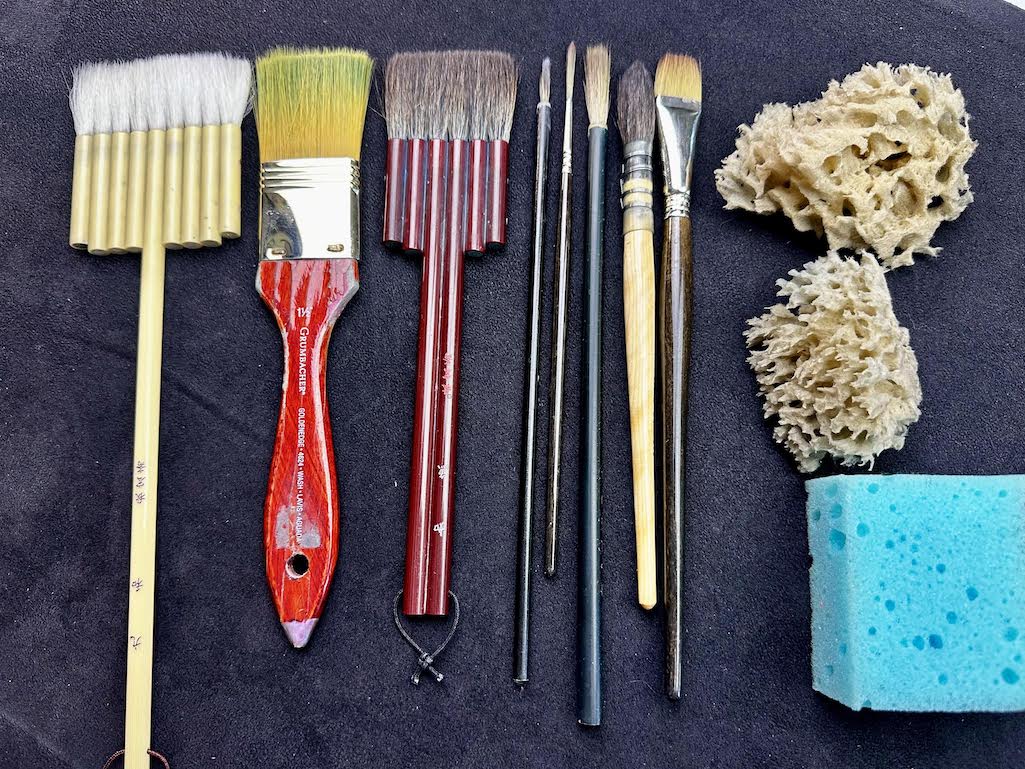
Watercolour paint:
You can watch a short VIDEO about paints that I am going to use during the course.
The list of paints:
Buff Titanium, Daniel Smith; or you can mix Yellow Ochre and Neutral Tint
Cadmium Yellow, Daniel Smith
Yellow Ochre, Daniel Smith
Transparent Orange, Schmincke (for Paint Library)
Burnt Sienna, Daniel Smith
Burnt Umber, Daniel Smith
Sepia, Daniel smith
Quinacridone Red, Daniel Smith (or any Red)
Opera Pink, Daniel Smith (for Paint Library)
Madder Lake, Daniel Smith (for Paint Library)
Carmine, Daniel Smith (for Paint Library)
Magenta, Daniel Smith
Undersea Green, Daniel Smith
Olive Green, Van Gogh
Cobalt Blue, Daniel Smith
Ultramarine, Van Gogh
Cerulean Blue, Van Gogh
Lavender, HWC
Indigo, Van Gogh
Neutral Tint, Daniel Smith
Payne’s Grey, Van Gogh
OPTIONAL: Additional paints:
Lemon Yellow or any light yellow, Daniel Smith
Naples Yellow, Holbein
Aussie Red Gold, Daniel Smith / Indian Yellow, M.Graham / Quinacridone Gold, Winsor&Newton
Quinacridone Burnt Orange, Daniel Smith
Quinacridone Rust, M.Graham
Quinacridone Purple, Daniel Smith
Gold Green, Daniel Smith
Viridian, Daneil Smith
Delft Blue, Schmincke
Royal Blue, Holbein
Prussian Blue, Daniel Smith
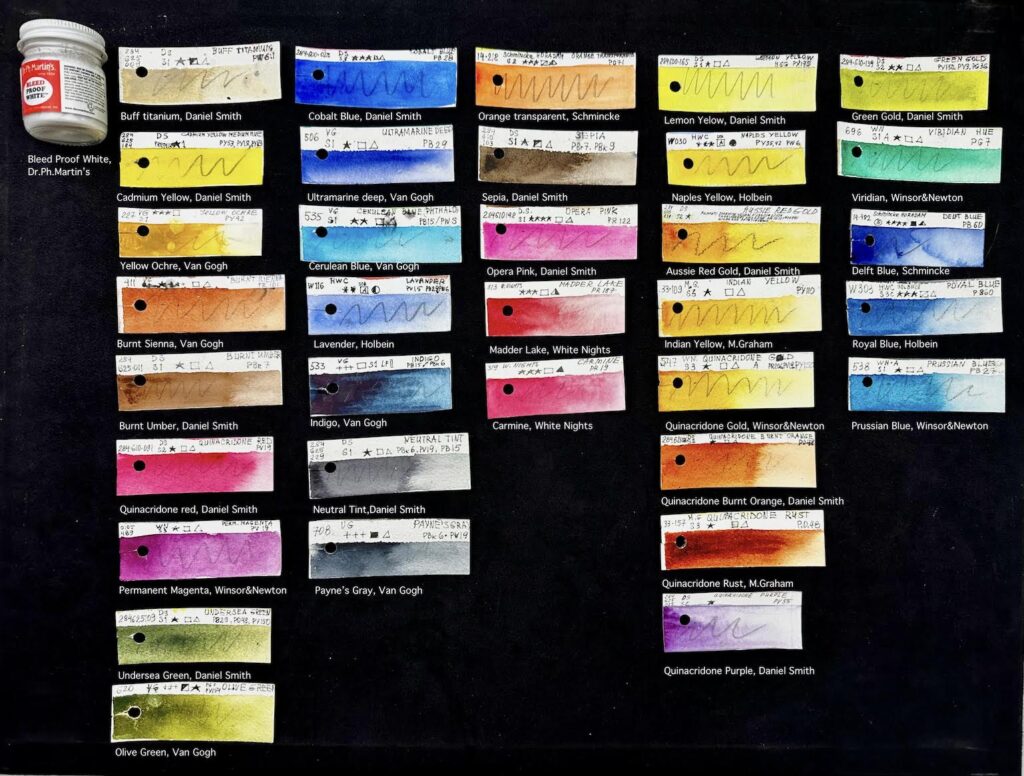
White Gouache and/or Bleed Proof White by Dr Ph Martin's (the best results)
Masking liquid and a small cheap brush (optional for Lesson 6)
Sea sponge
Kitchen sponge
Plexiglass board (any plastic board that the wet paper will stick to); You can use any smooth surface board big enough to place your paper on it; glass, mirror, flat baking sheet
Watercolour board or heavy cardboard for exercises
Watercolour palette with a large surface for mixing pigments. Alternatively, you can use a white ceramic plate
Artistic tape, different width (from 3 mm to 2 cm)
Food wrap or plastic bag (optional for Lesson 1)
A Pencil HB and Eraser
Nano mister (link) and water spray (optional)
Two large jars for water
Paper towels and Kleenex
Hair dryer
